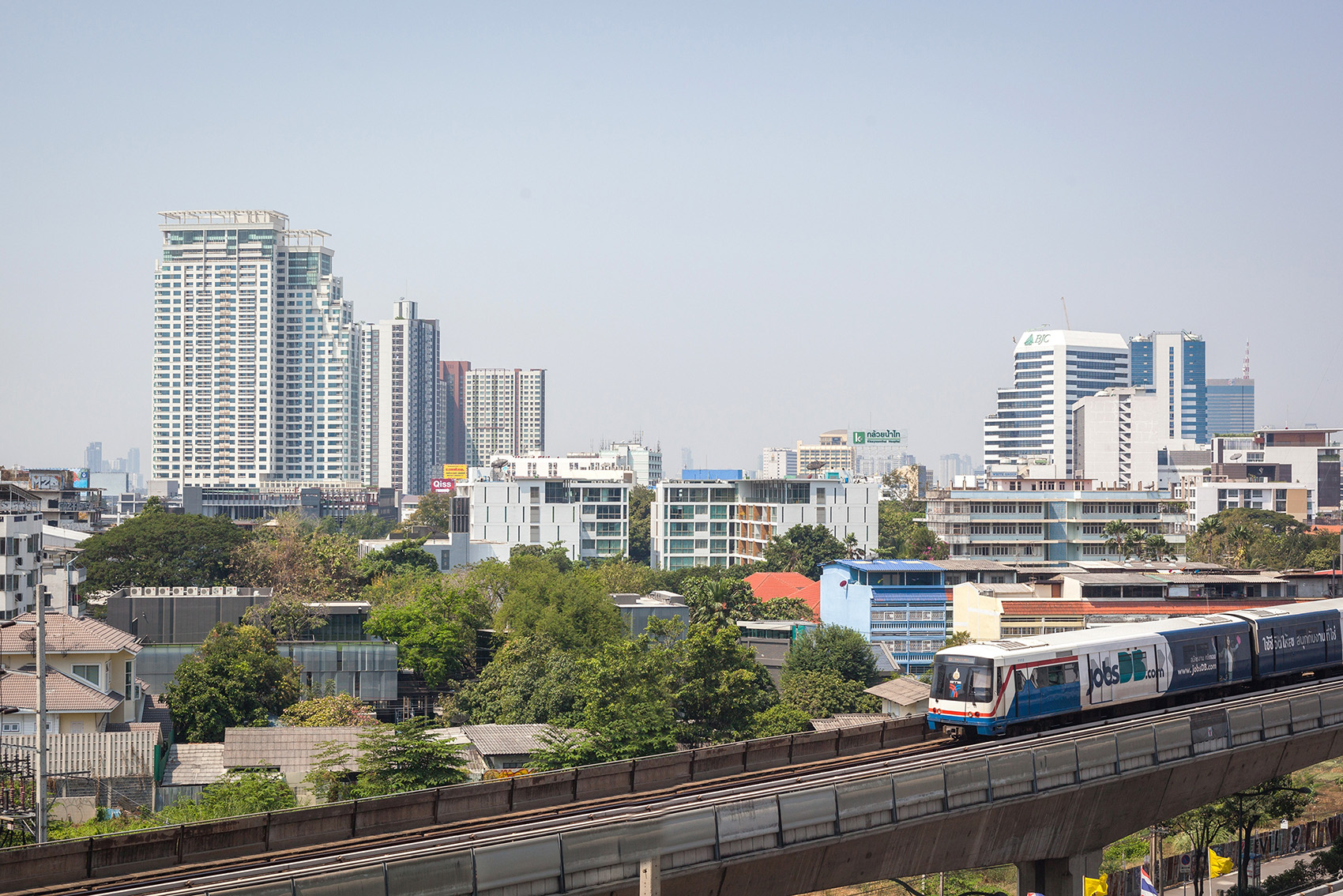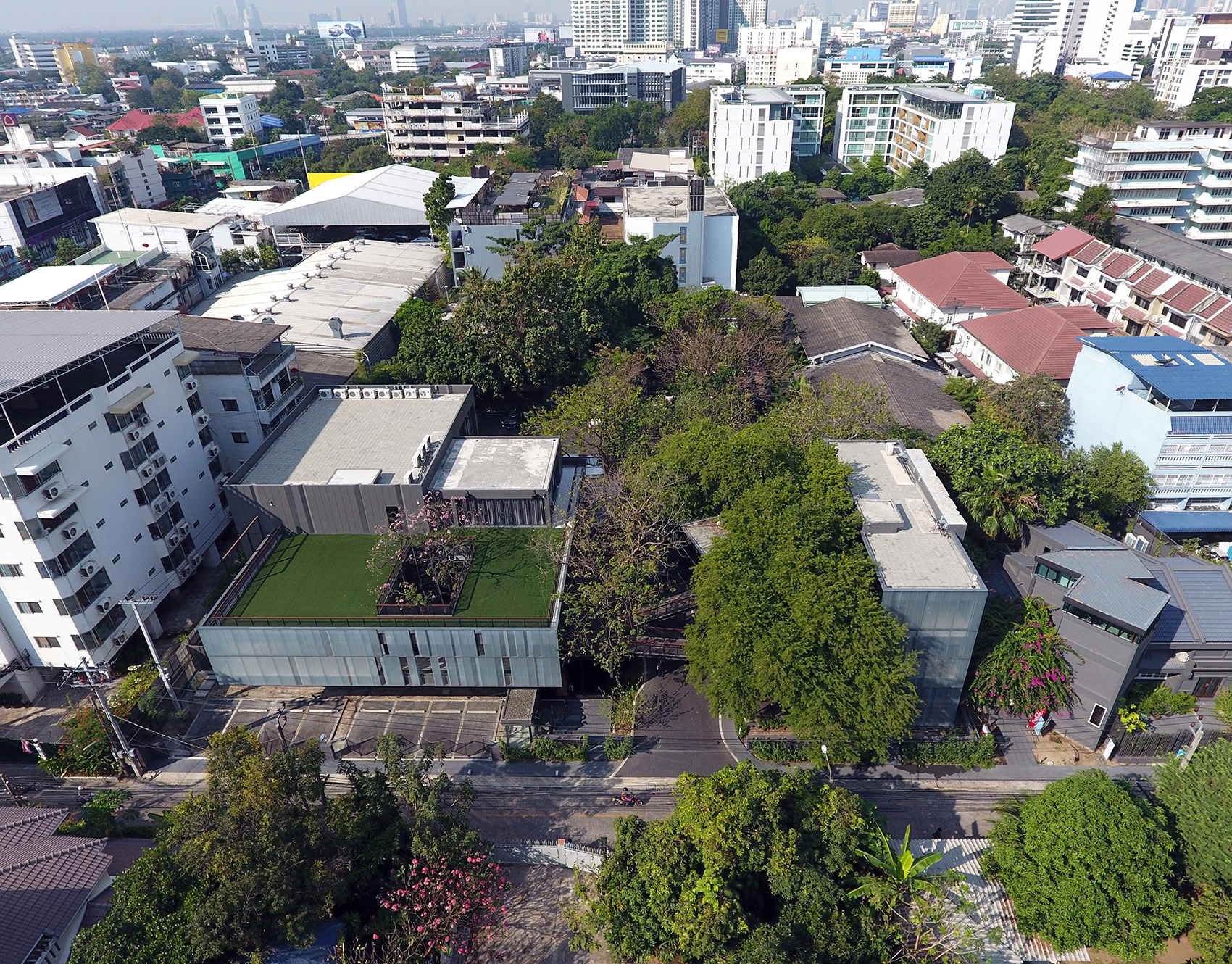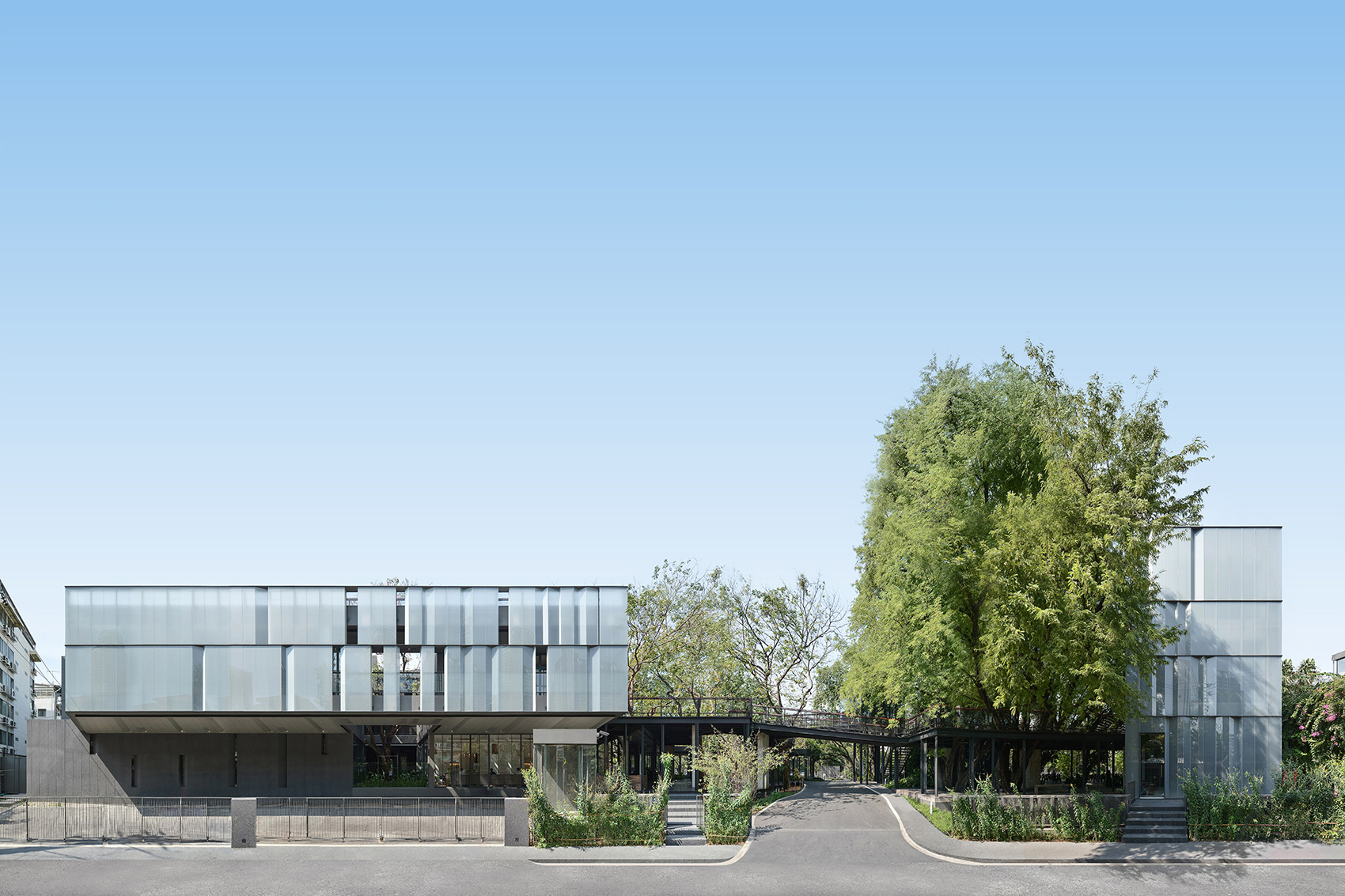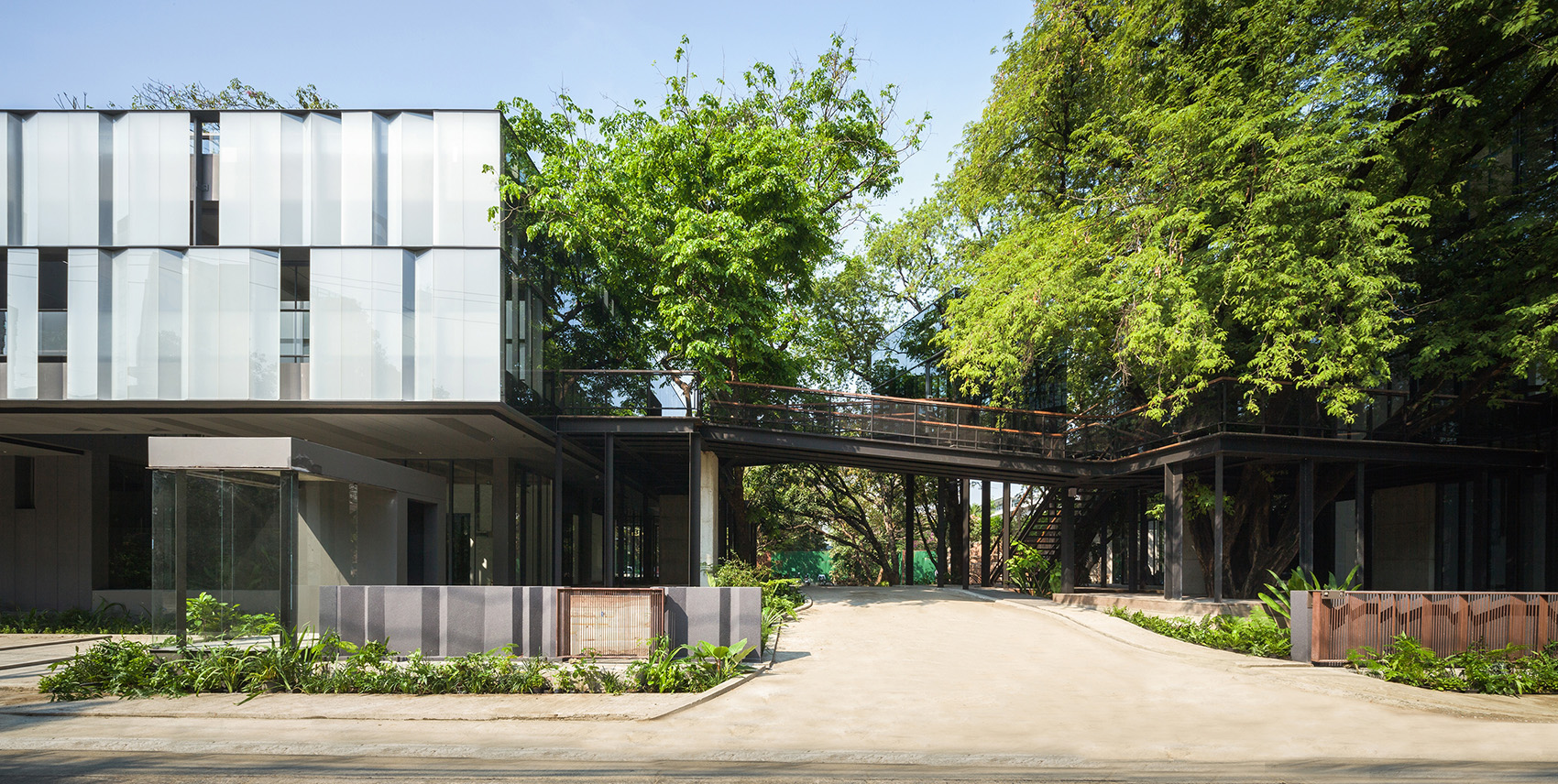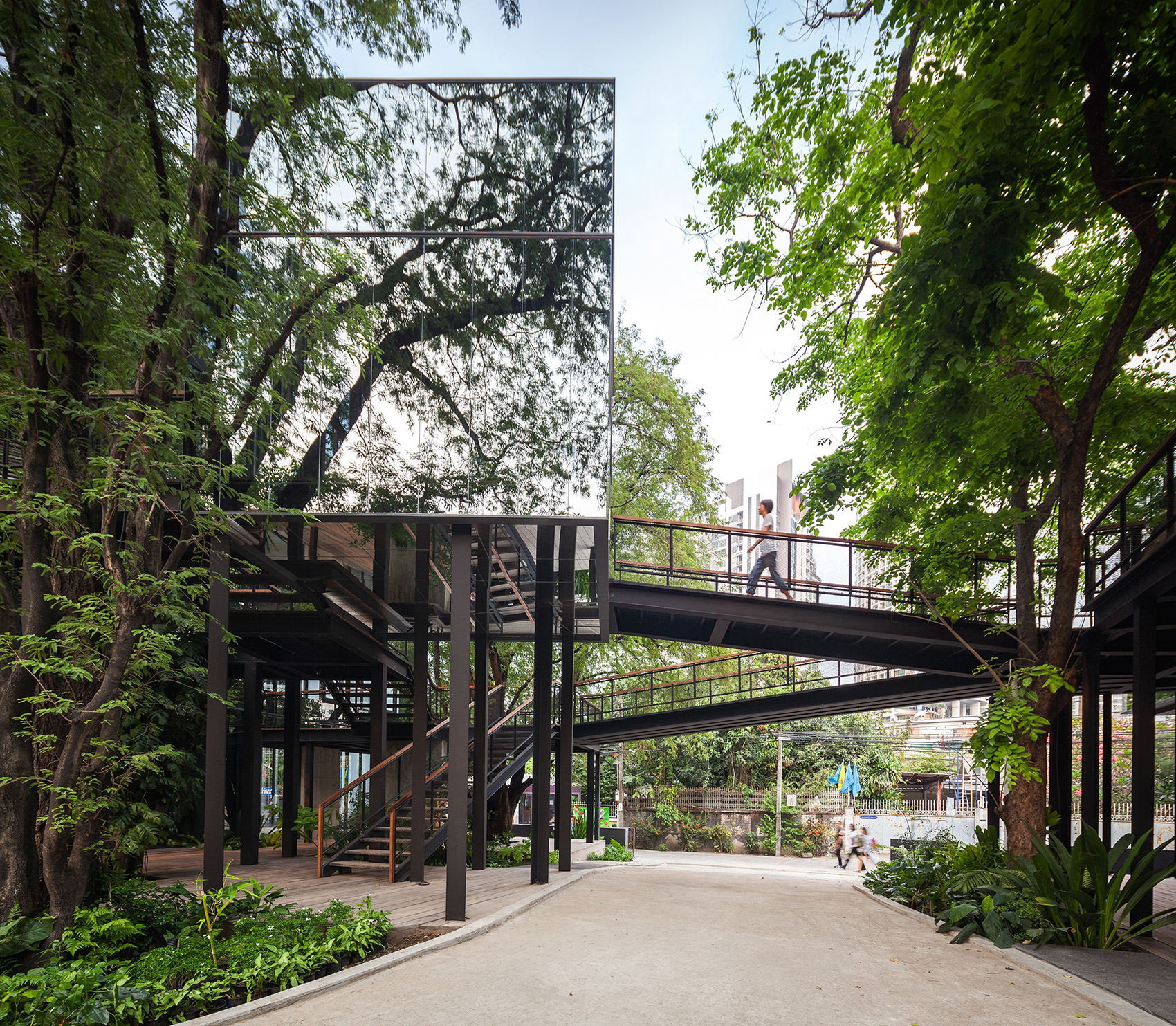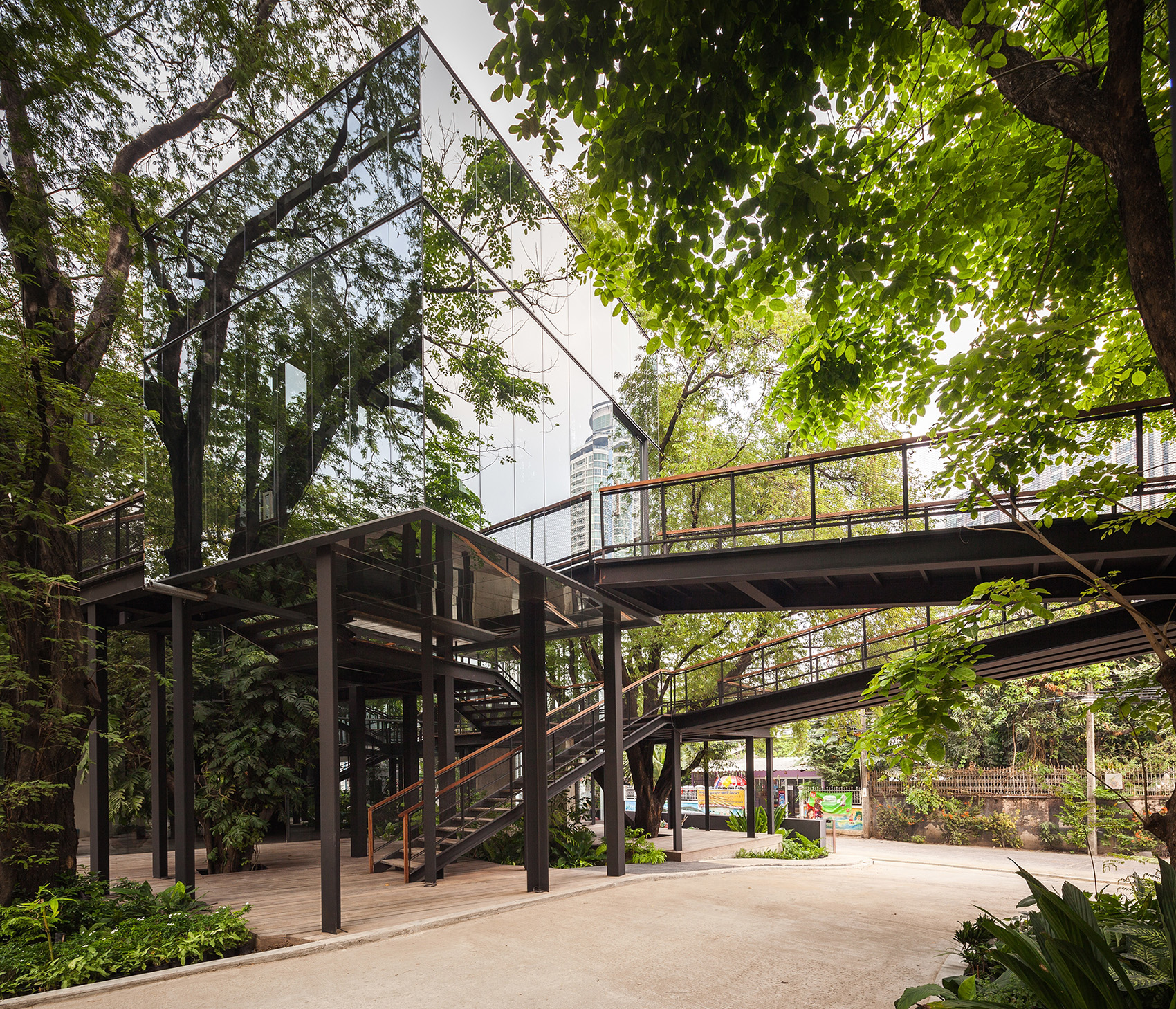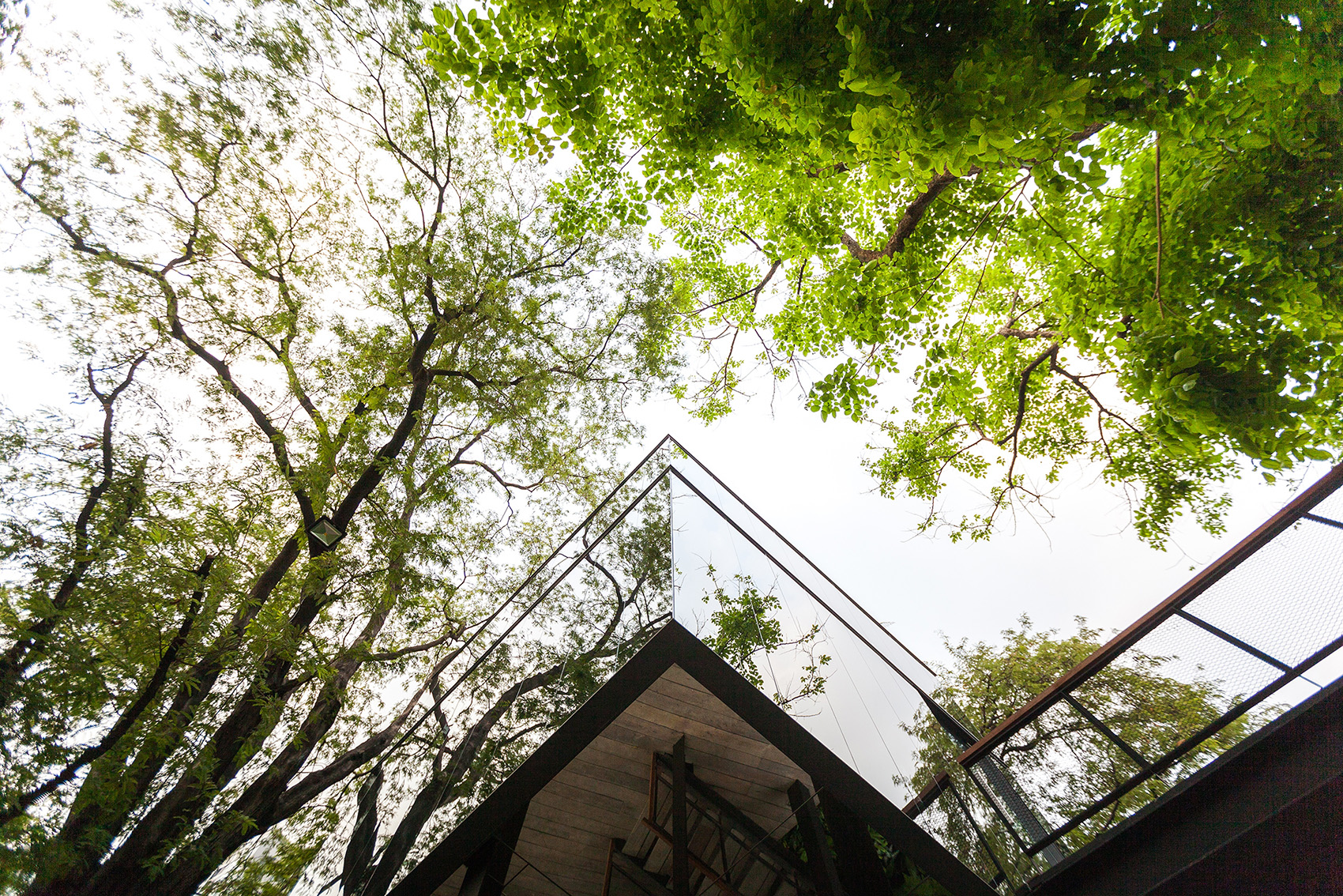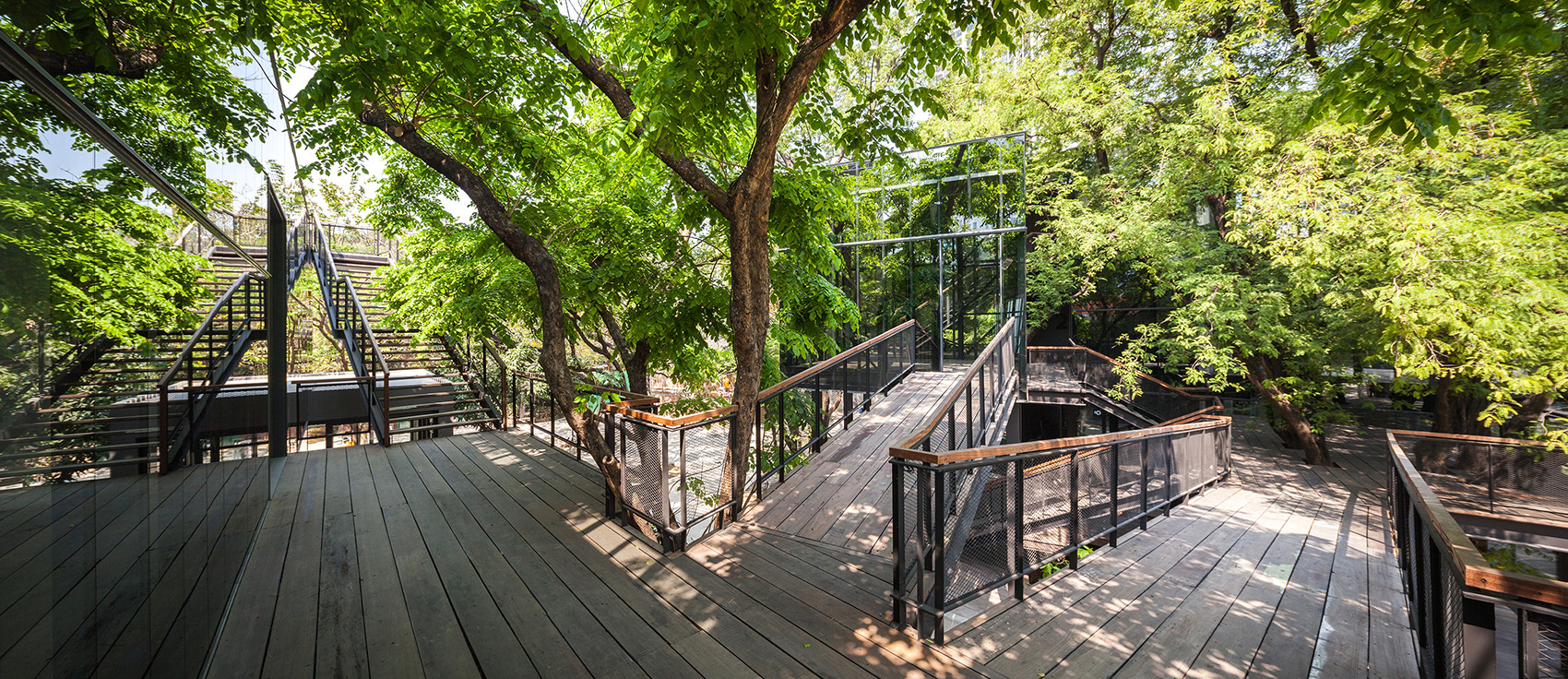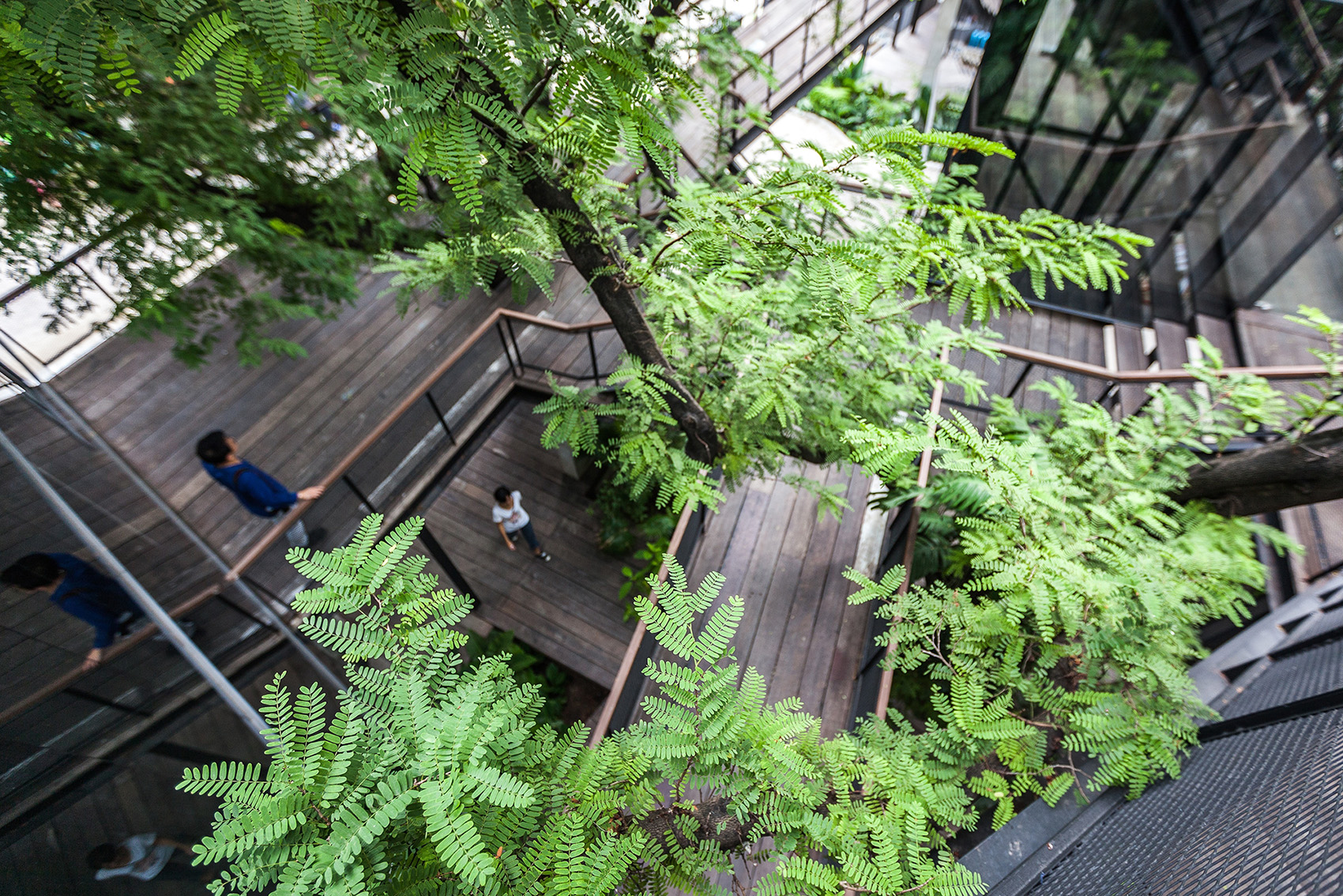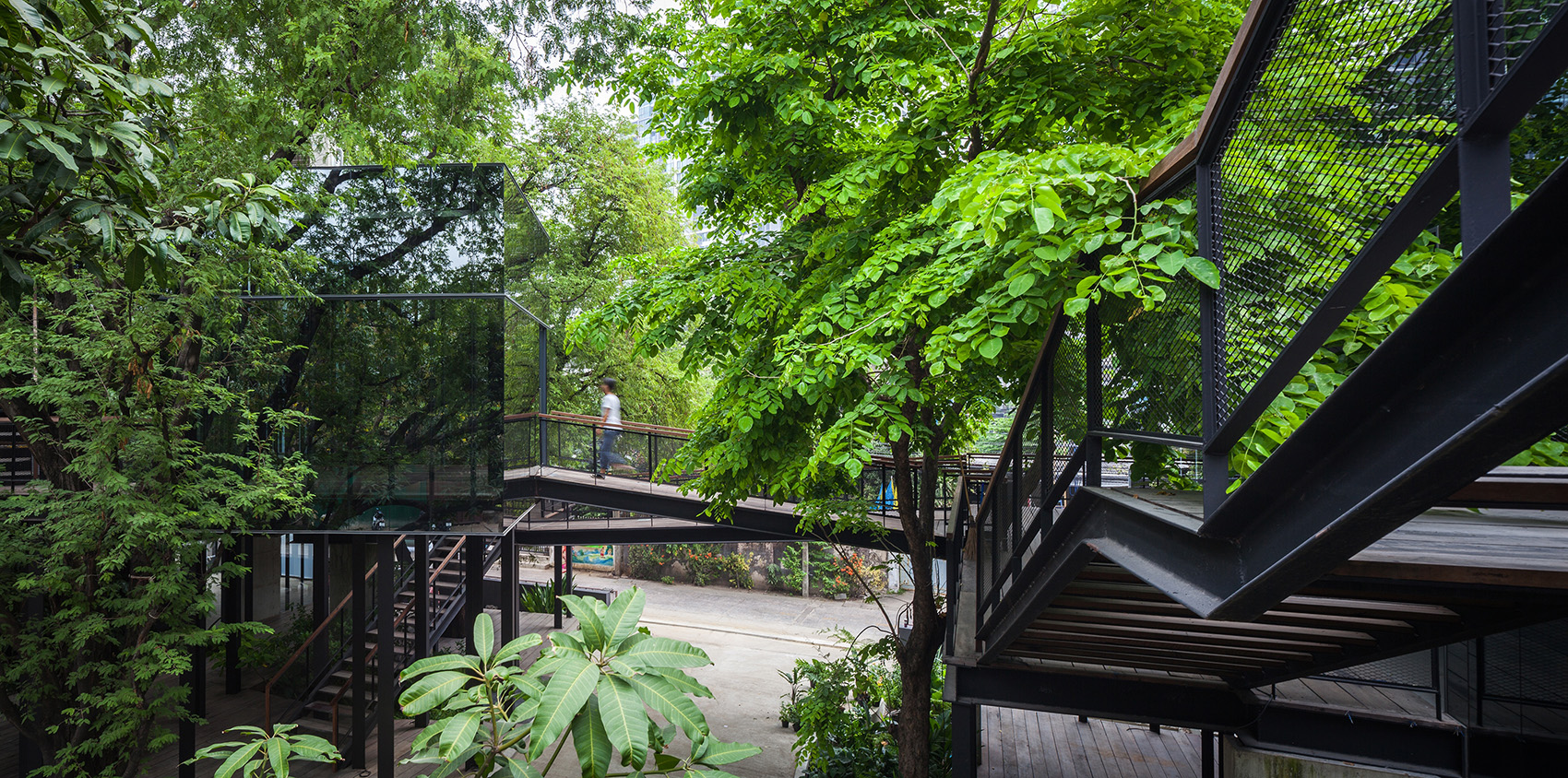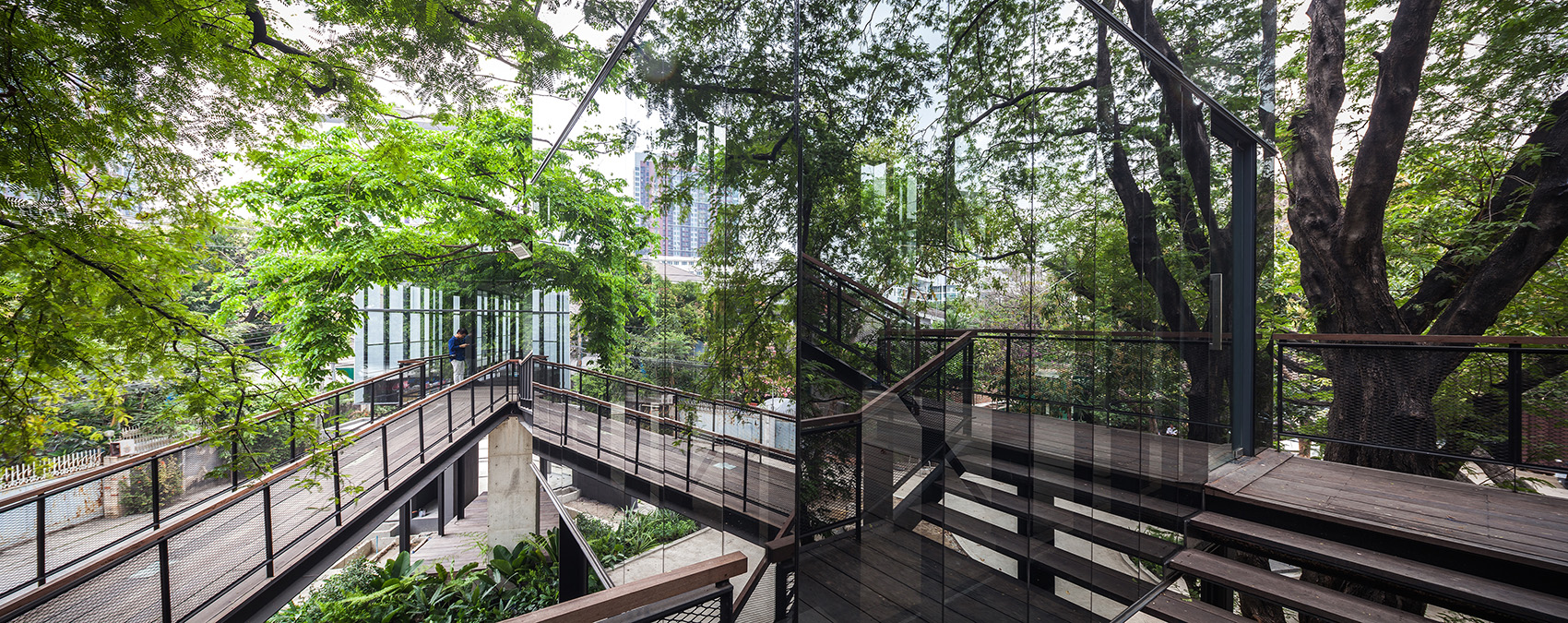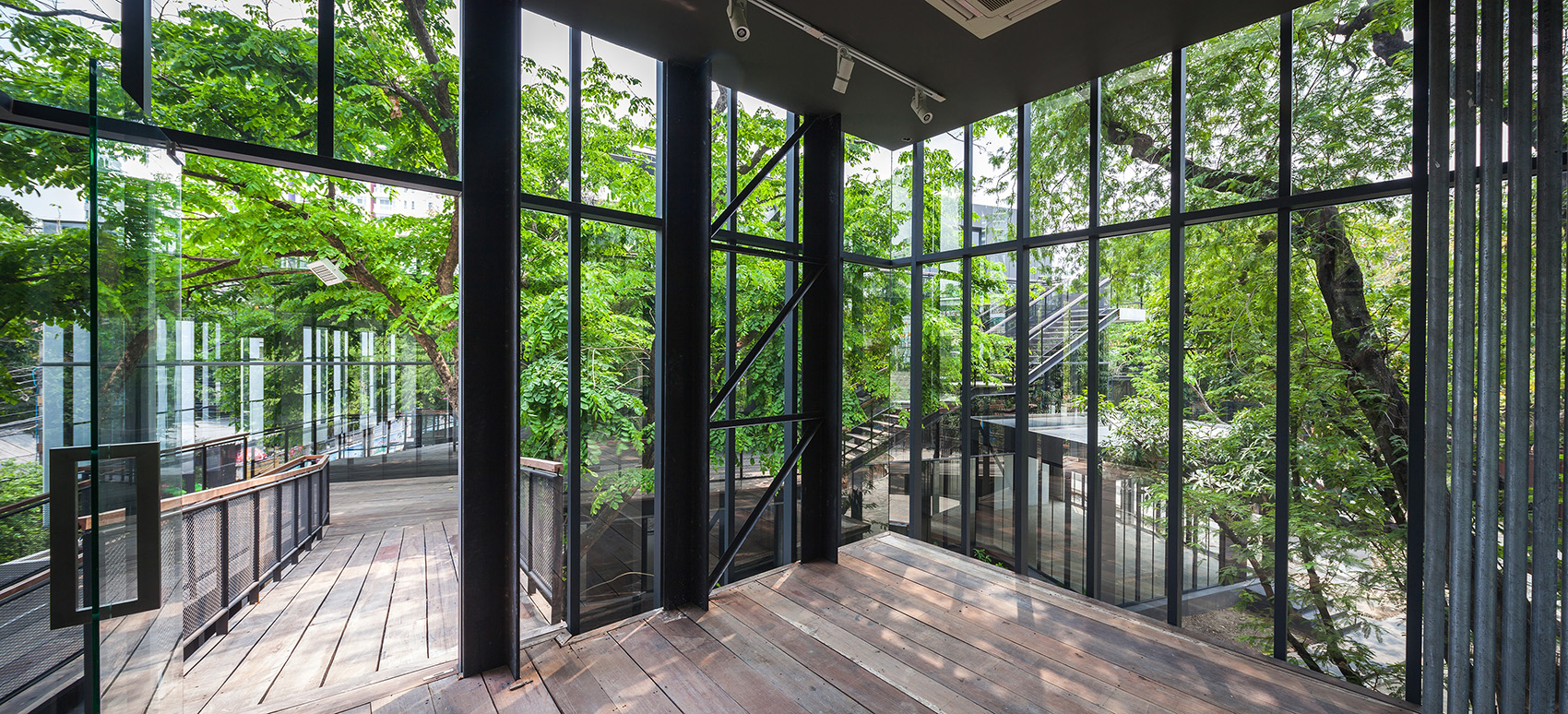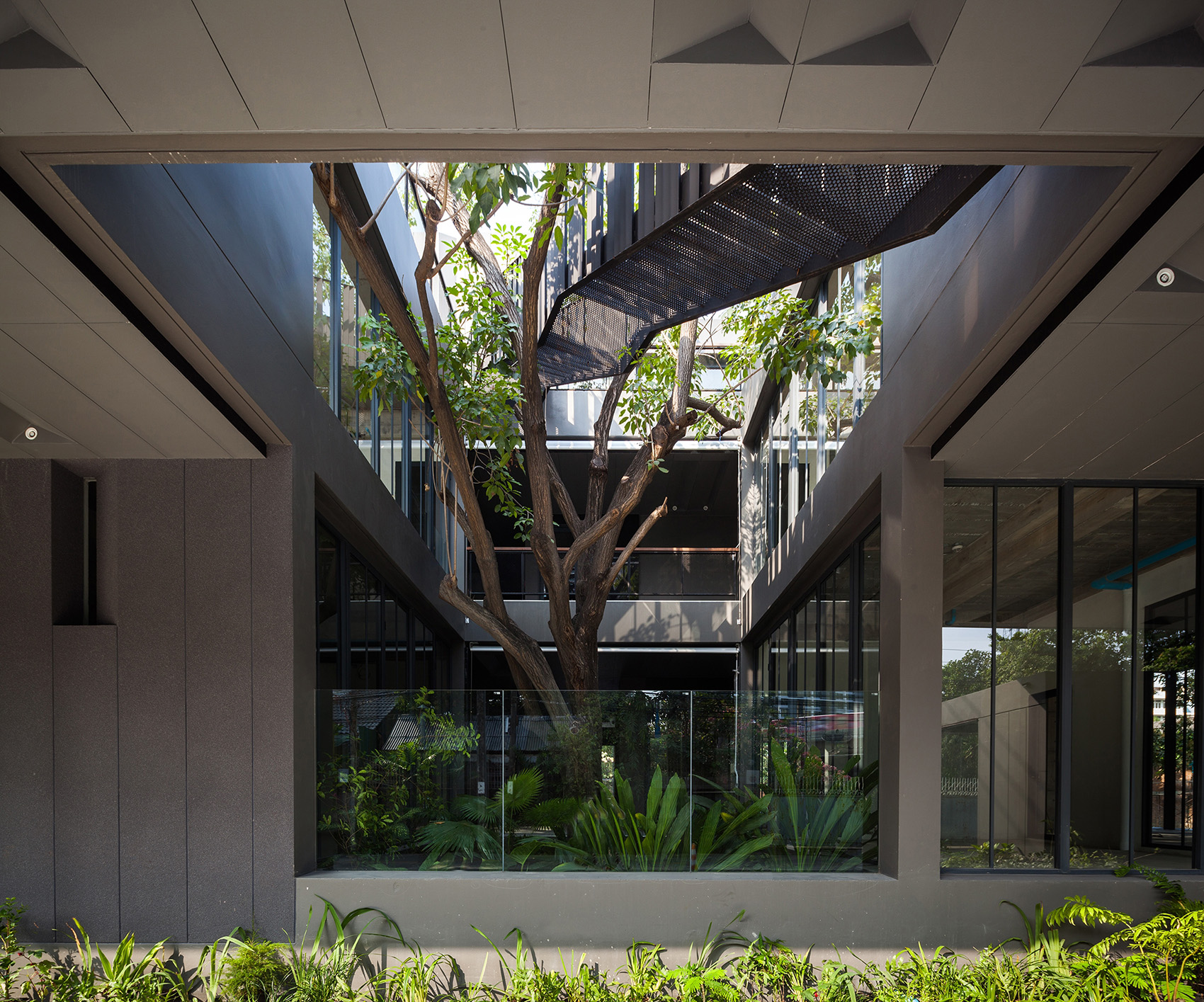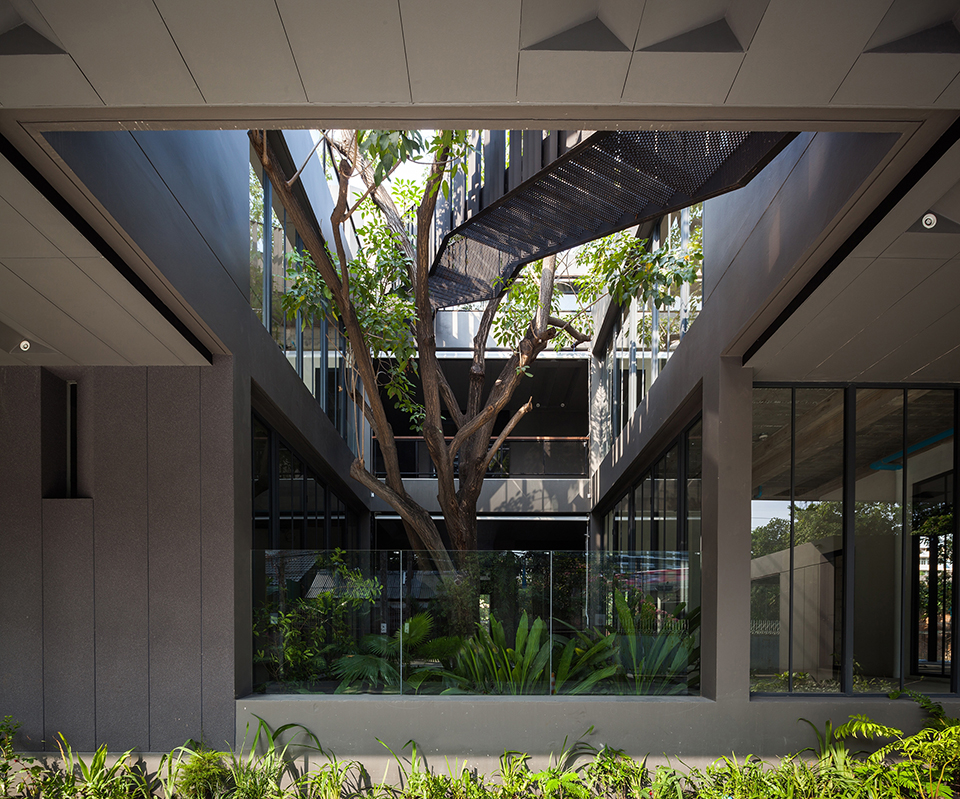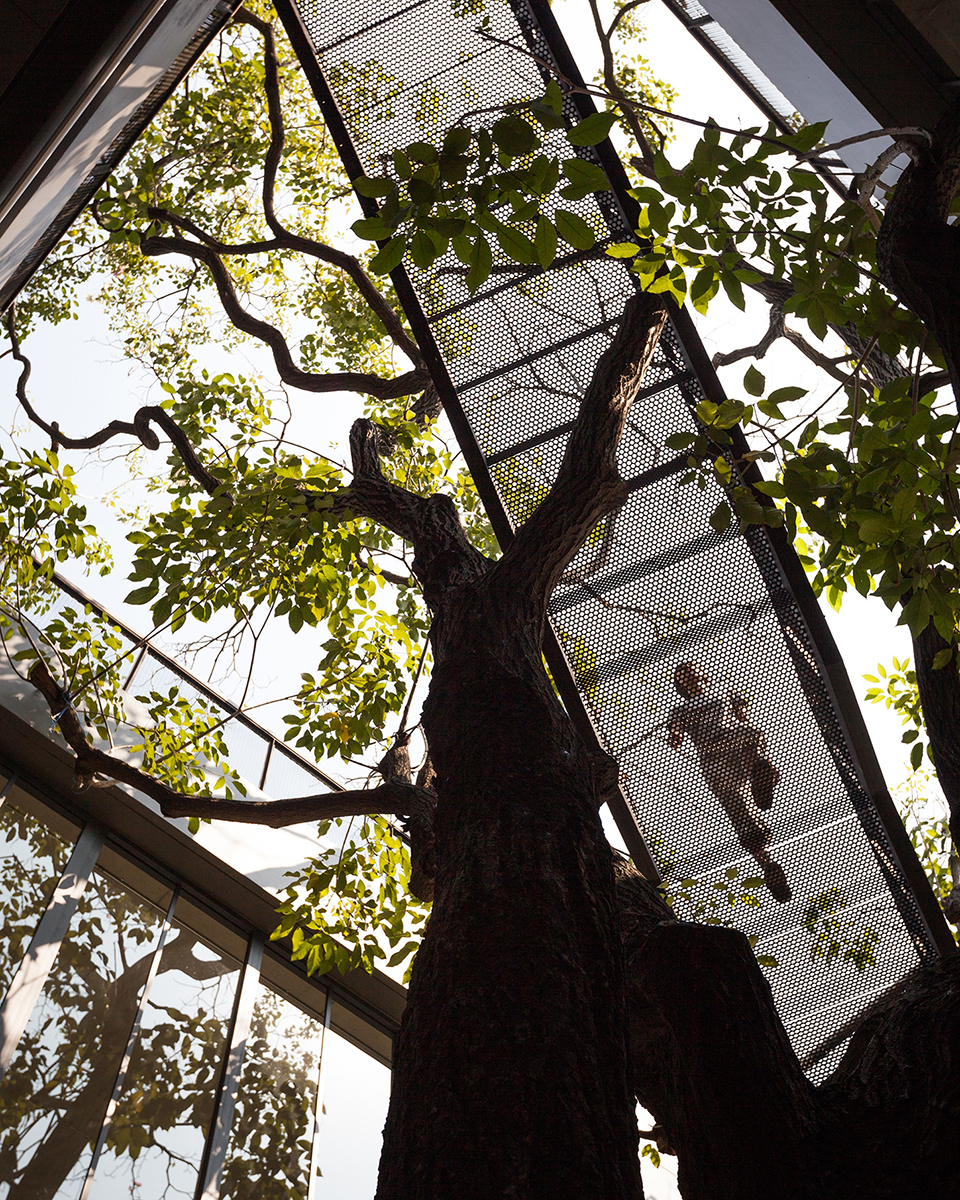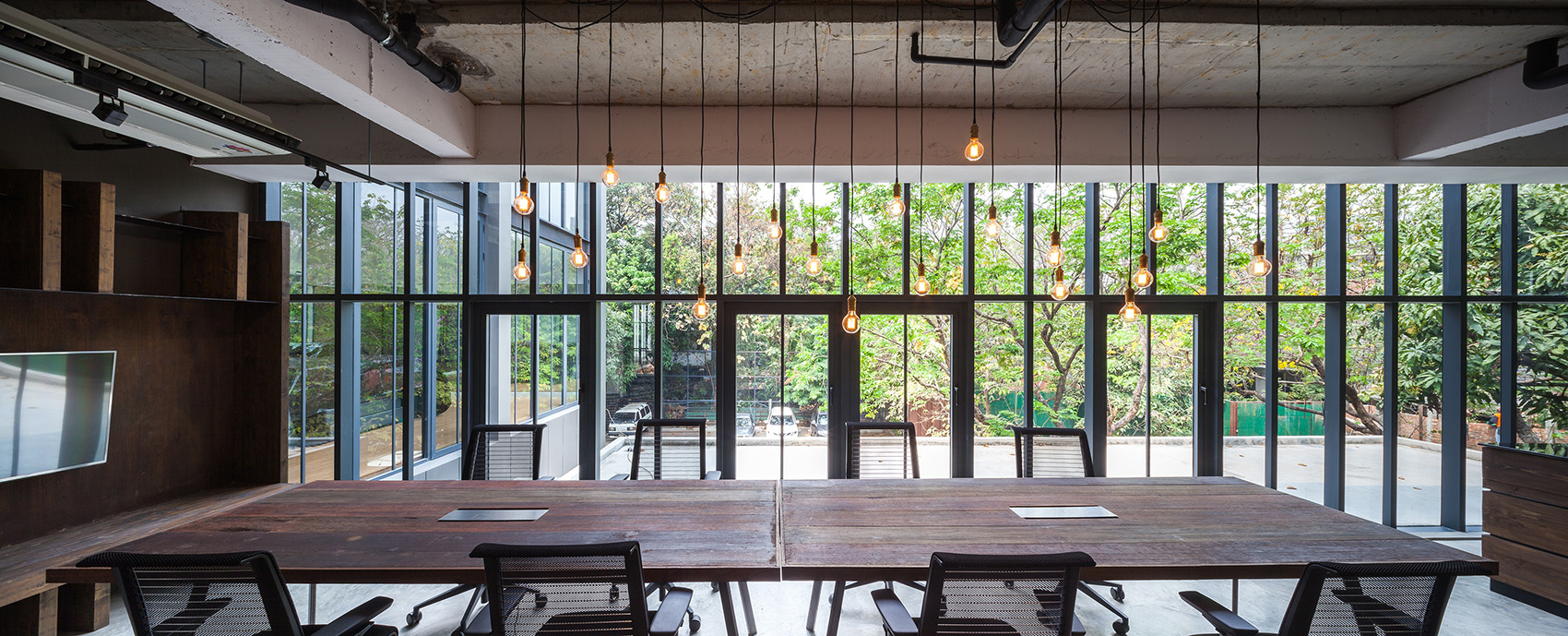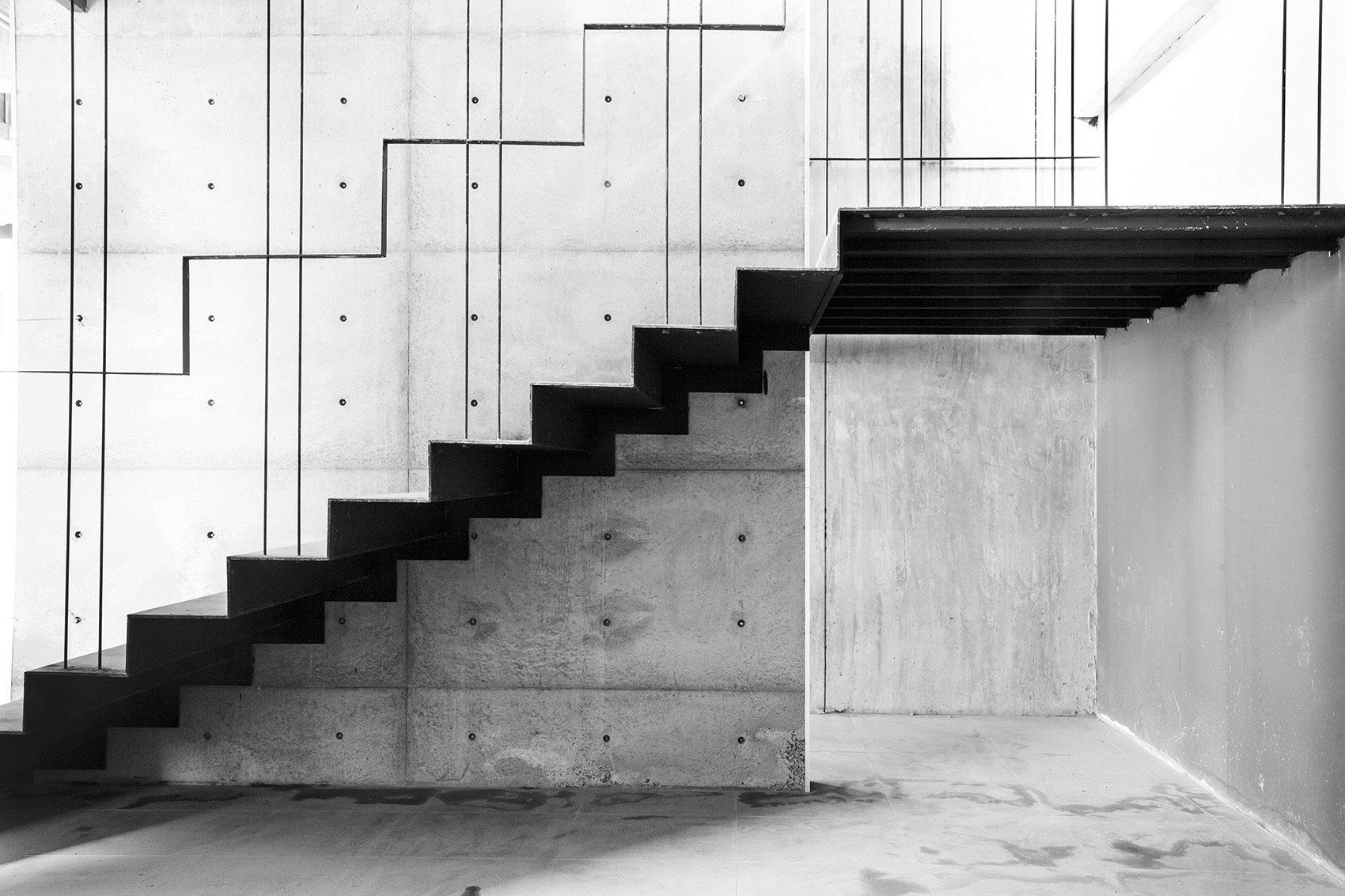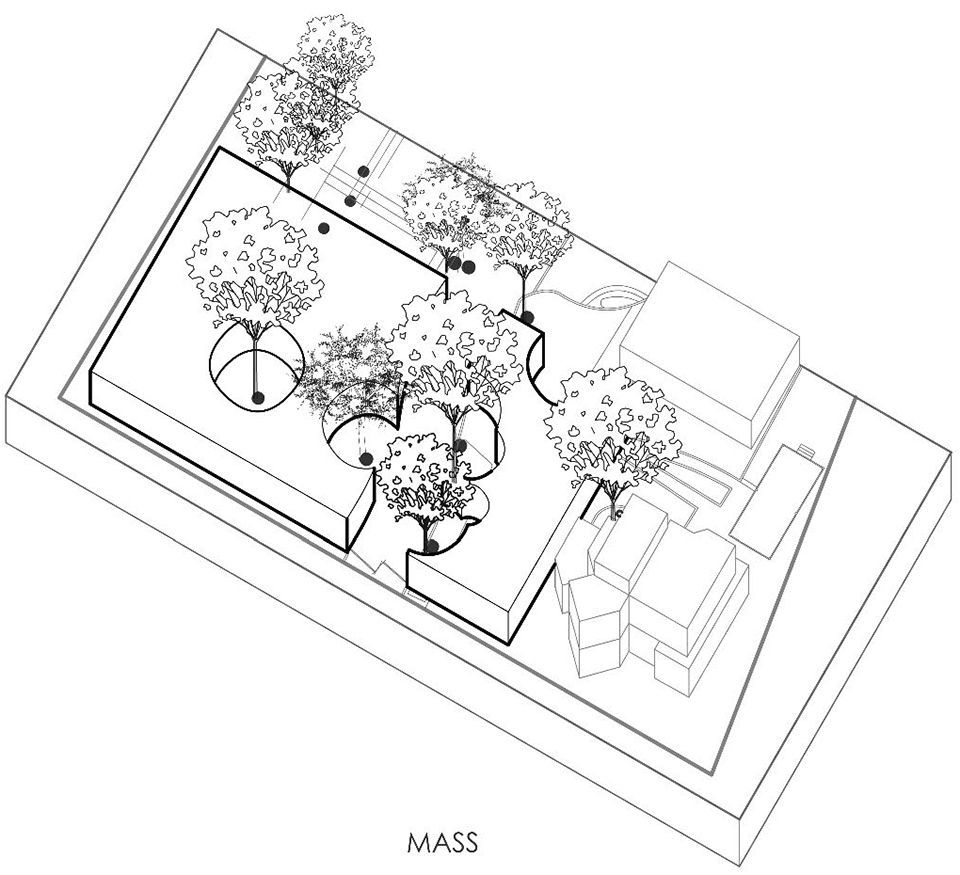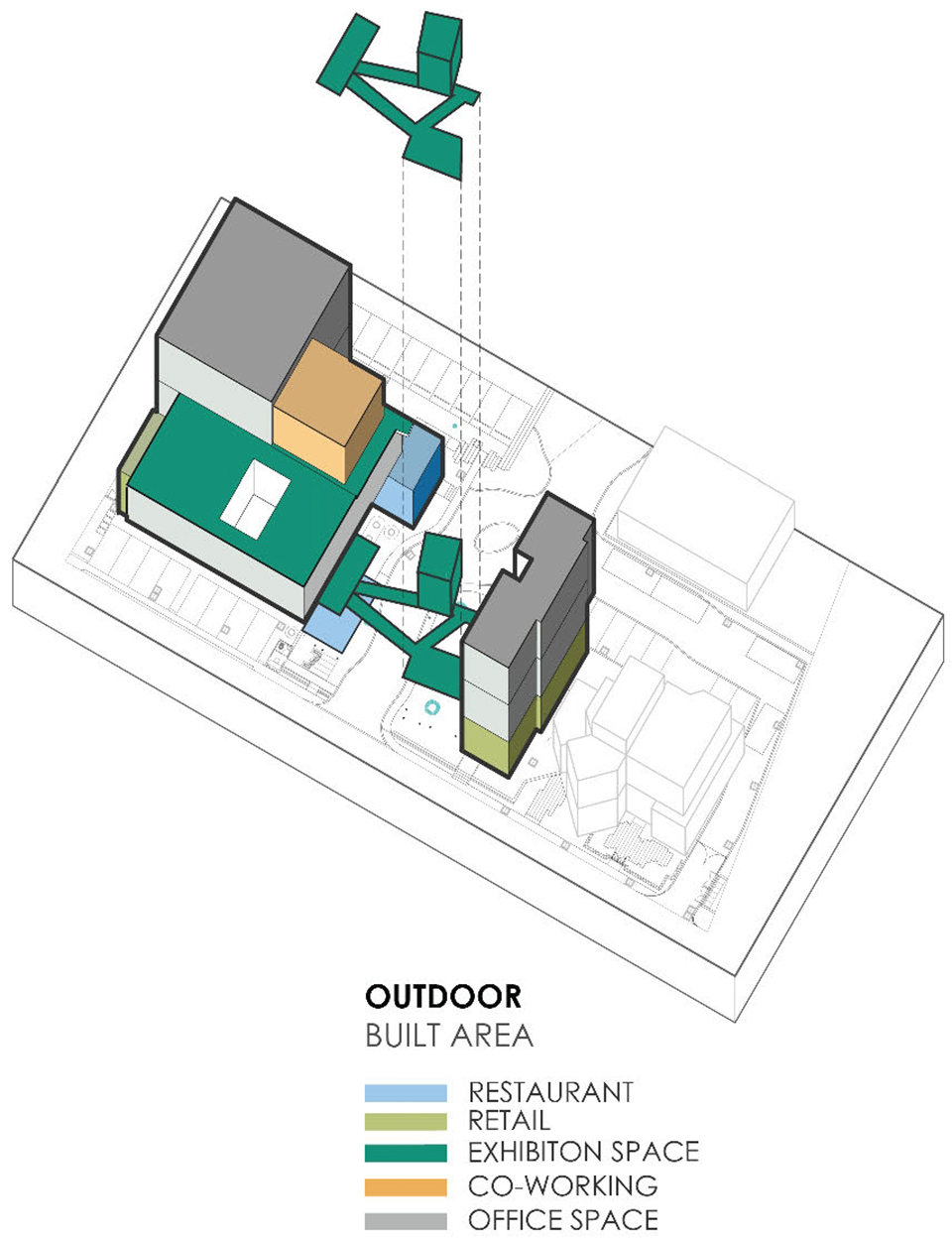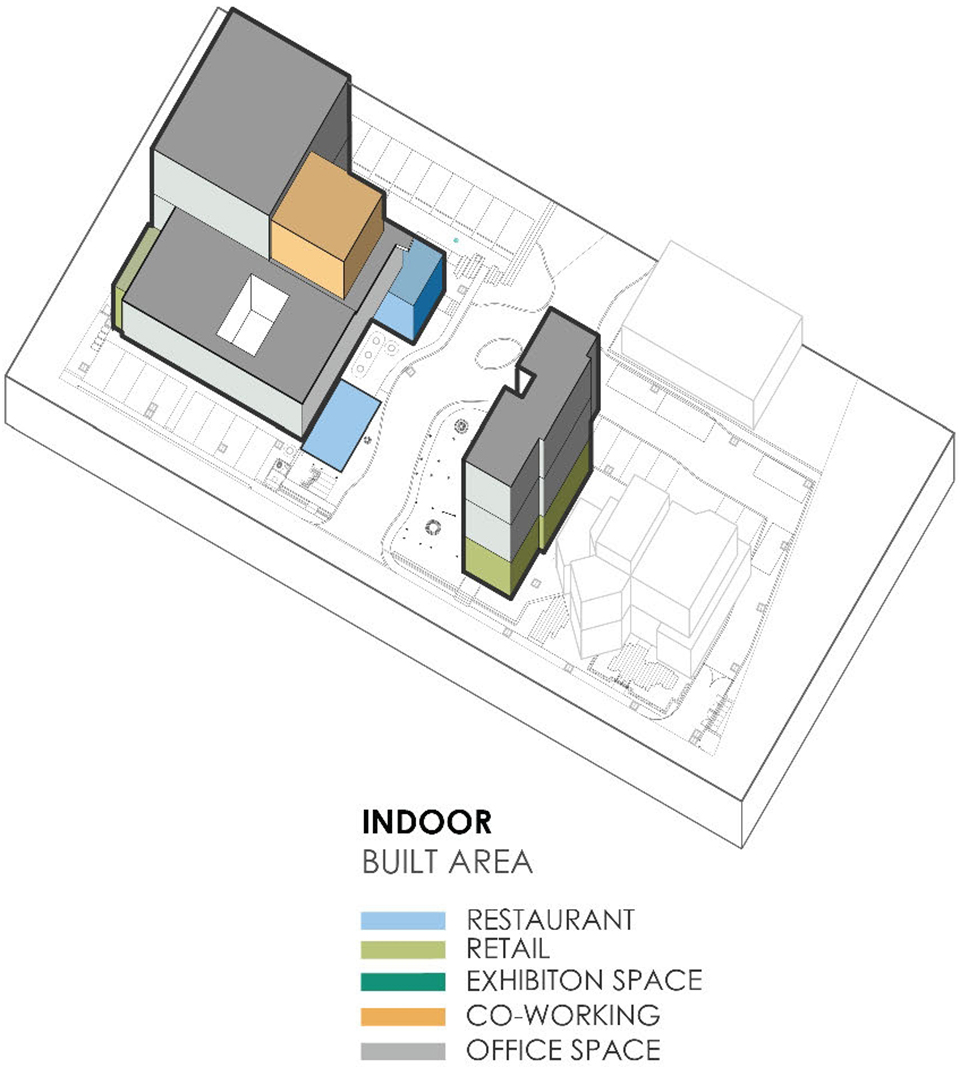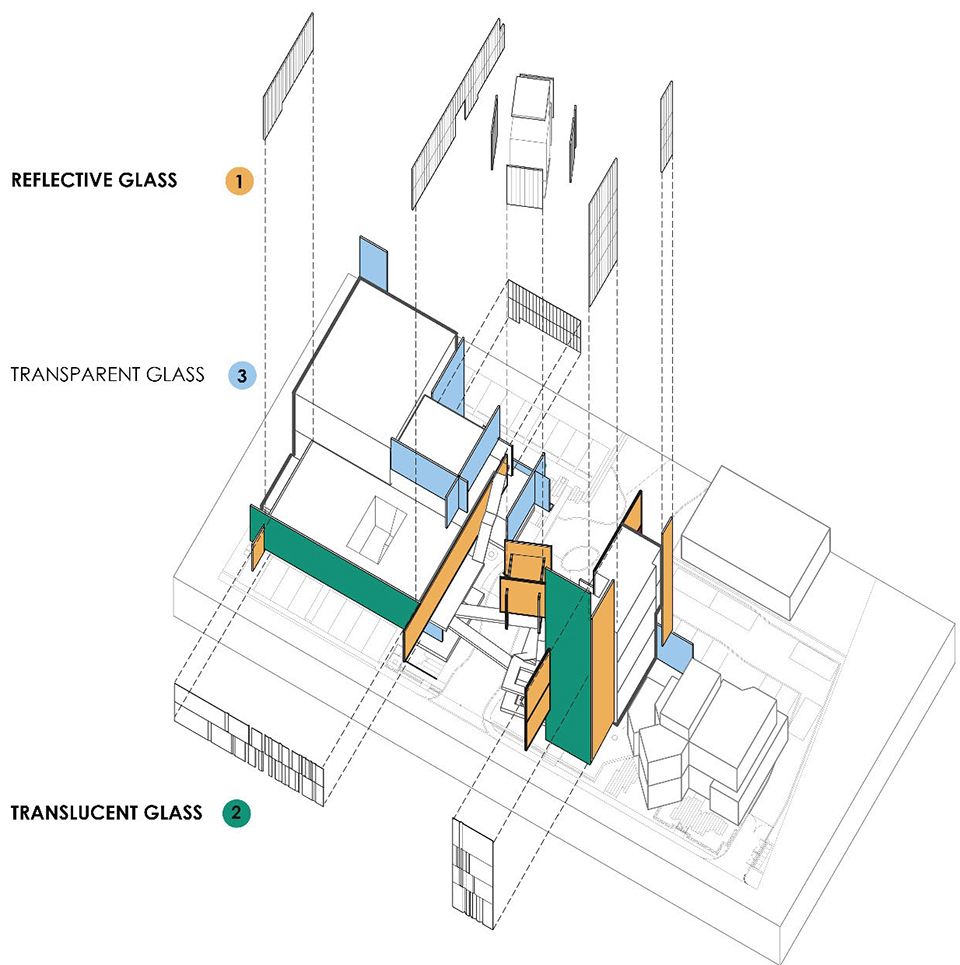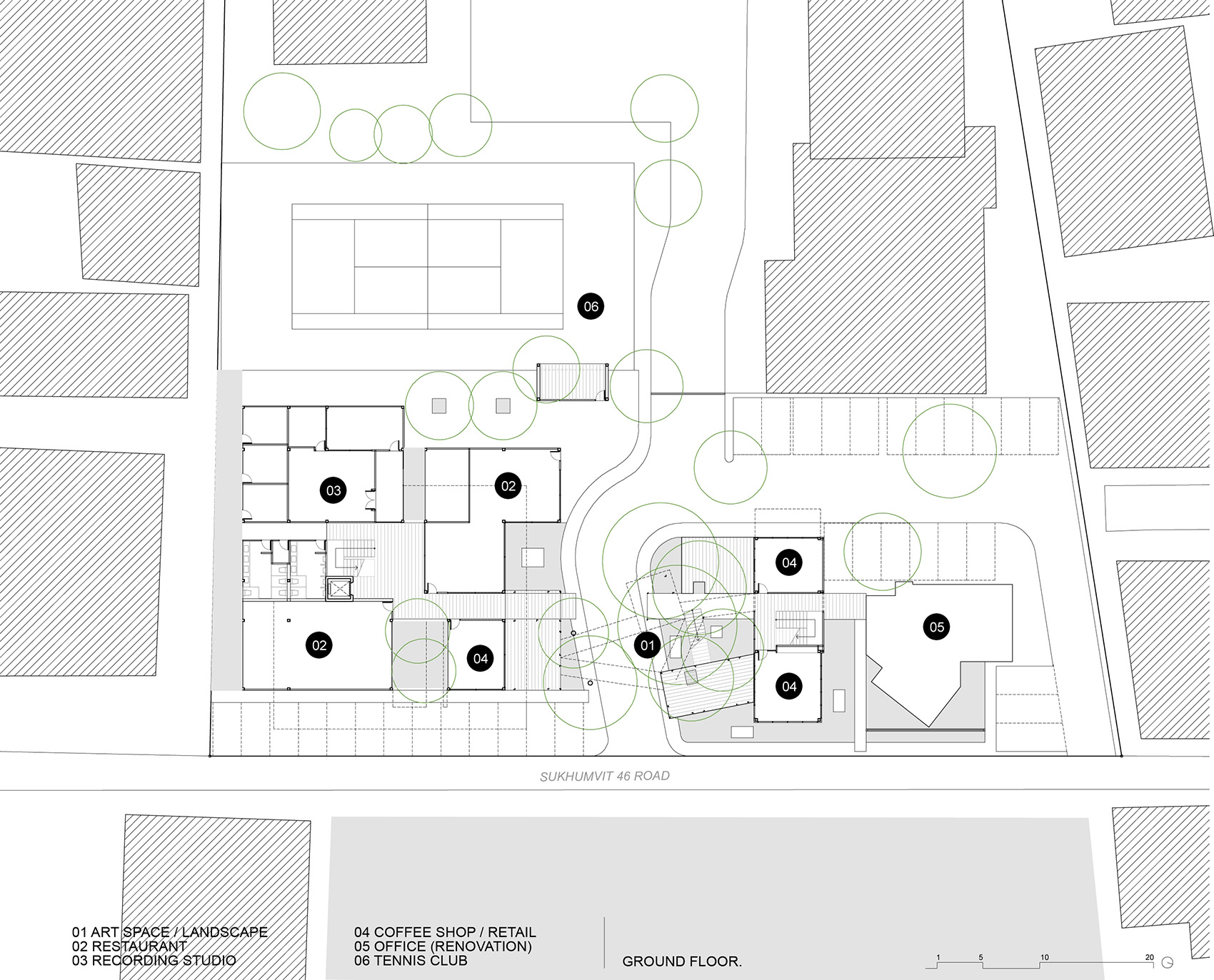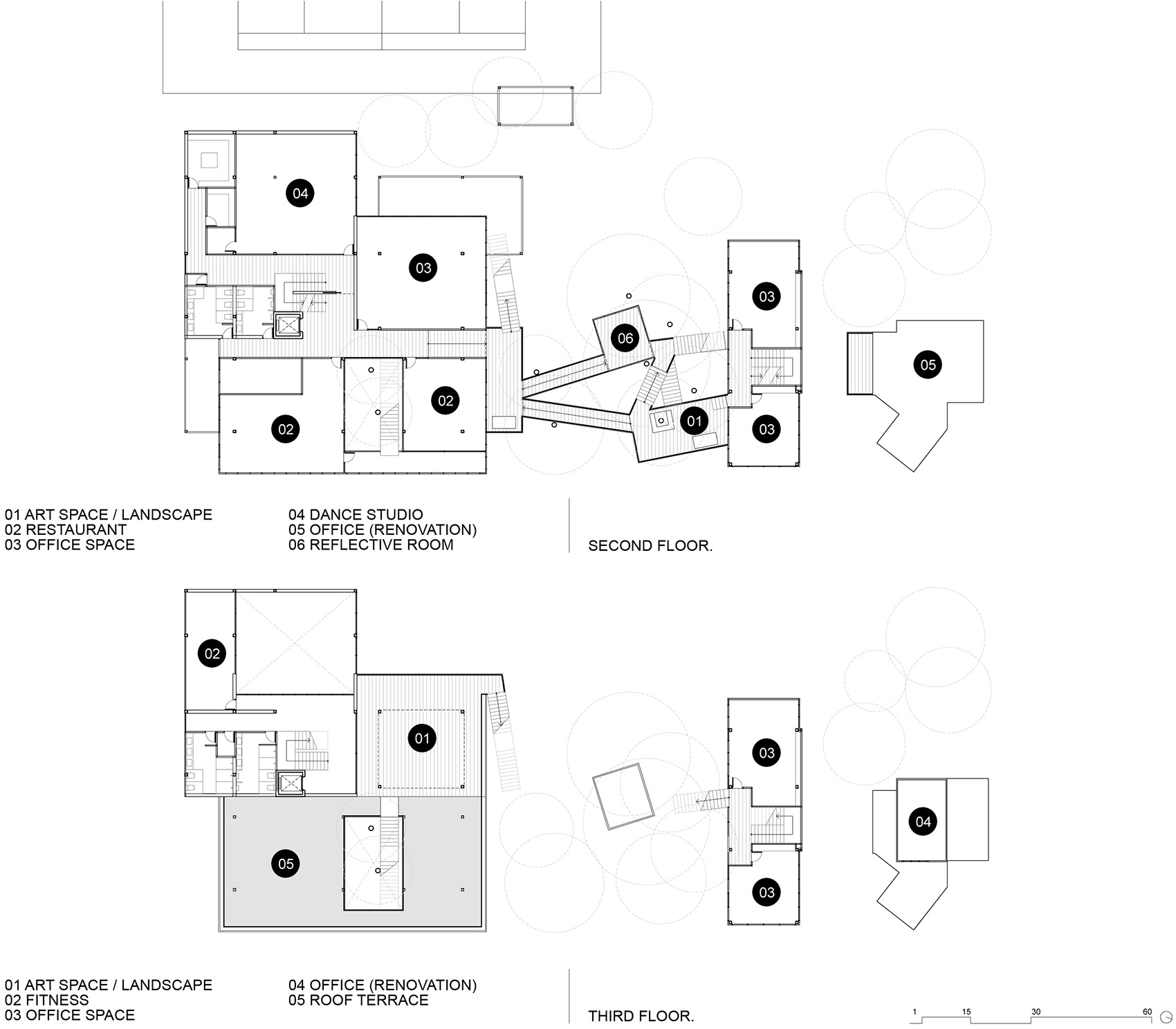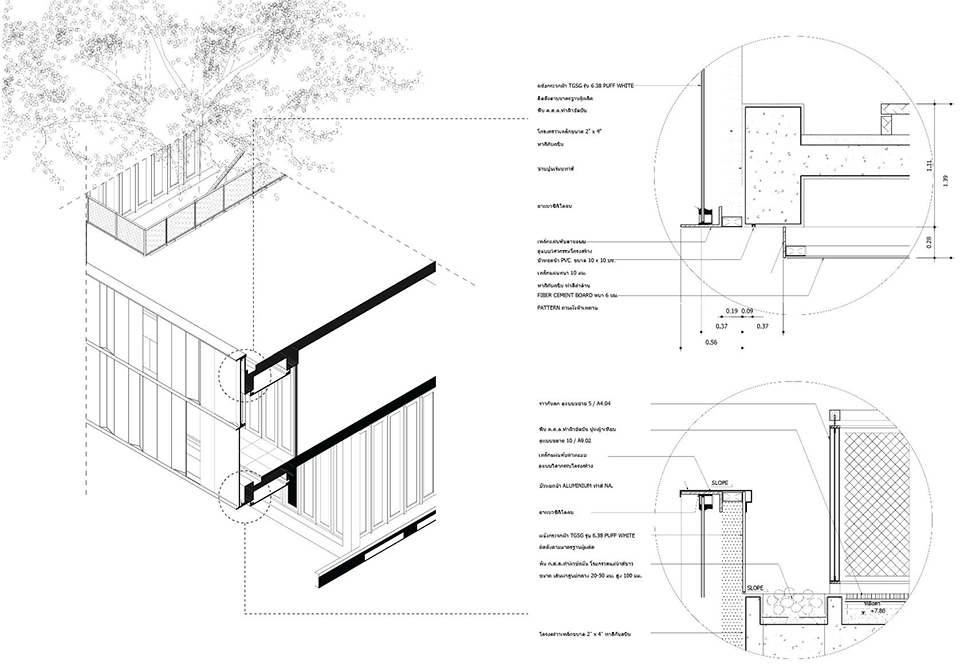Naiipa(字面含义为“森林深处”)是一座综合性的建筑项目,包含画廊、录音工作室、舞蹈室、餐厅、咖啡厅和办公空间等。该综合体位于Sukhumvit 46号,这条小街道连接了Rama路4号以及Sukhumvit路上的Phrakanong BTS车站。项目的名称源于其隐藏于森林中的设计思路,环绕在建筑四周的反射玻璃使葱郁的环境得以扩展。
Naiipa (Literally means ‘Deep in the Forest’) is a mixed use project consisted of an Art Gallery, Sound Recording Studio, Dance Studio, Restaurants, Coffee Shops, and Office Spaces. It is located on Sukhumvit 46, a small street that connects Rama 4 road to Phrakanong BTS Station on Sukhumvit road. The project is named after the concept of concealing the architecture in the forest as the vision of greenery is expanded by using reflective glass all around.
▼综合体鸟瞰,aerial view
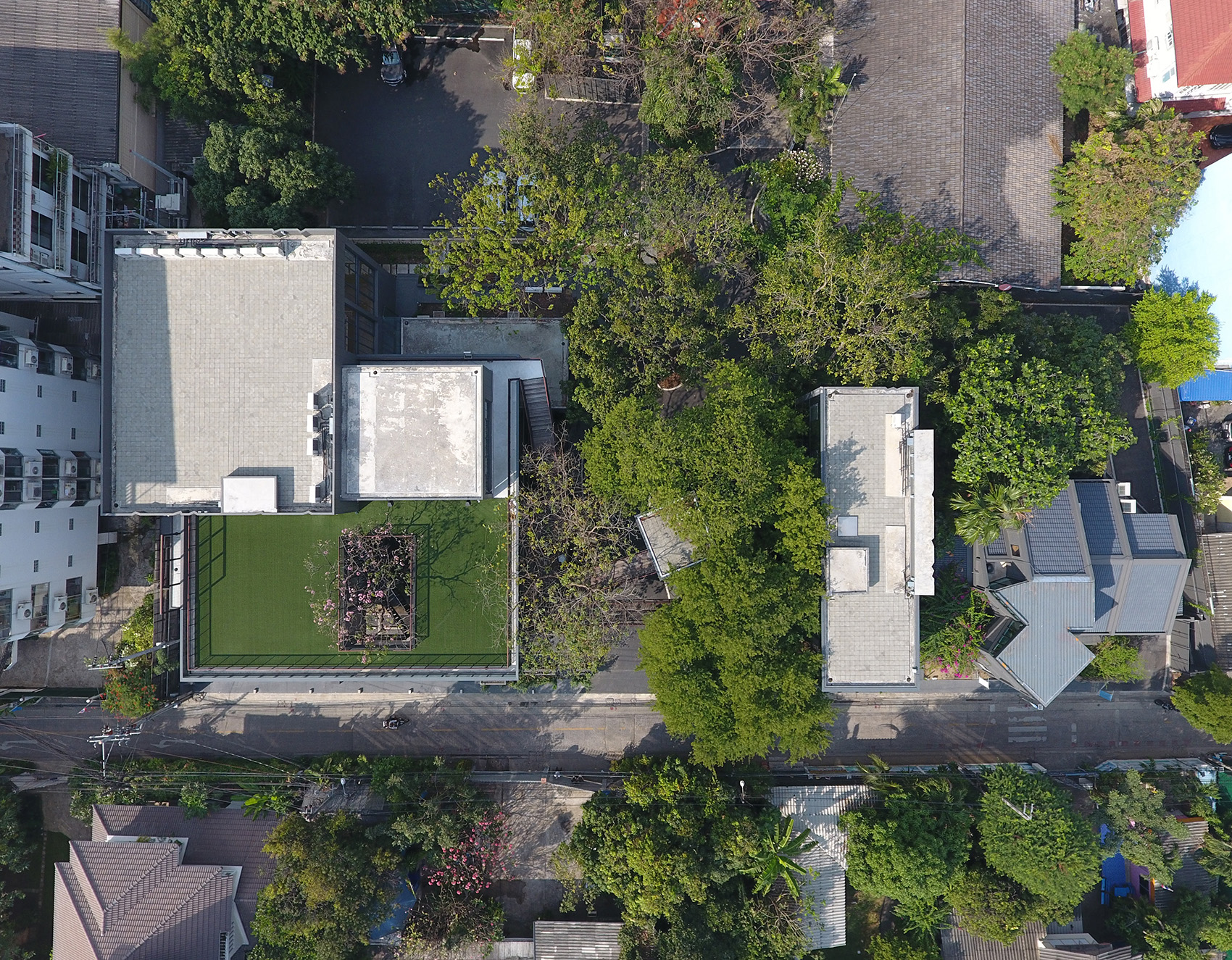
在到达建筑后,参观者将首先看到矗立在场地中央的一组树木,这也是整个项目的核心所在。方案的最初目的便是让建筑与树木亲密共存,从而为使用者和参观者带来一个宁静且充满灵感的艺术社区。
Upon arrival, visitors are greeted with the project’s main feature and driving force in design, a groups of large, pre-existing trees in its center. From the very beginning, the goal of Naiipa has been to create architecture that seamlessly co-exist with the trees, providing a peaceful and inspiring art community for both its occupants and visitors.
▼让建筑与树木亲密共存是方案的初衷所在,from the very beginning, the goal of Naiipa has been to create architecture that seamlessly co-exist with the trees

▼项目分为A栋和B栋两个主要的体量,并分布在场地两边,the main functions are divided into two to main masses which bounded the site

该项目共涵盖2000平方米的办公及零售空间,分为A栋和B栋两个主要的体量,并分布在场地两边,为中间留出以树为核心的开放式庭院。A栋建筑是一座两层高的狭长建筑,该设计能够使阳光顺利照射到既有的斑叶钟花树上,在促进其生长的同时也为使用者带来一个气氛宜人的庭院。B栋建筑是一栋竖直的4层建筑,与A栋的体量形成对比。这两栋建筑通过多层级的露台连接起来,繁茂的树木依然保持着原来的位置,交织并穿插在这些露台之间。
▼外部空间示意,outdoor space diagram
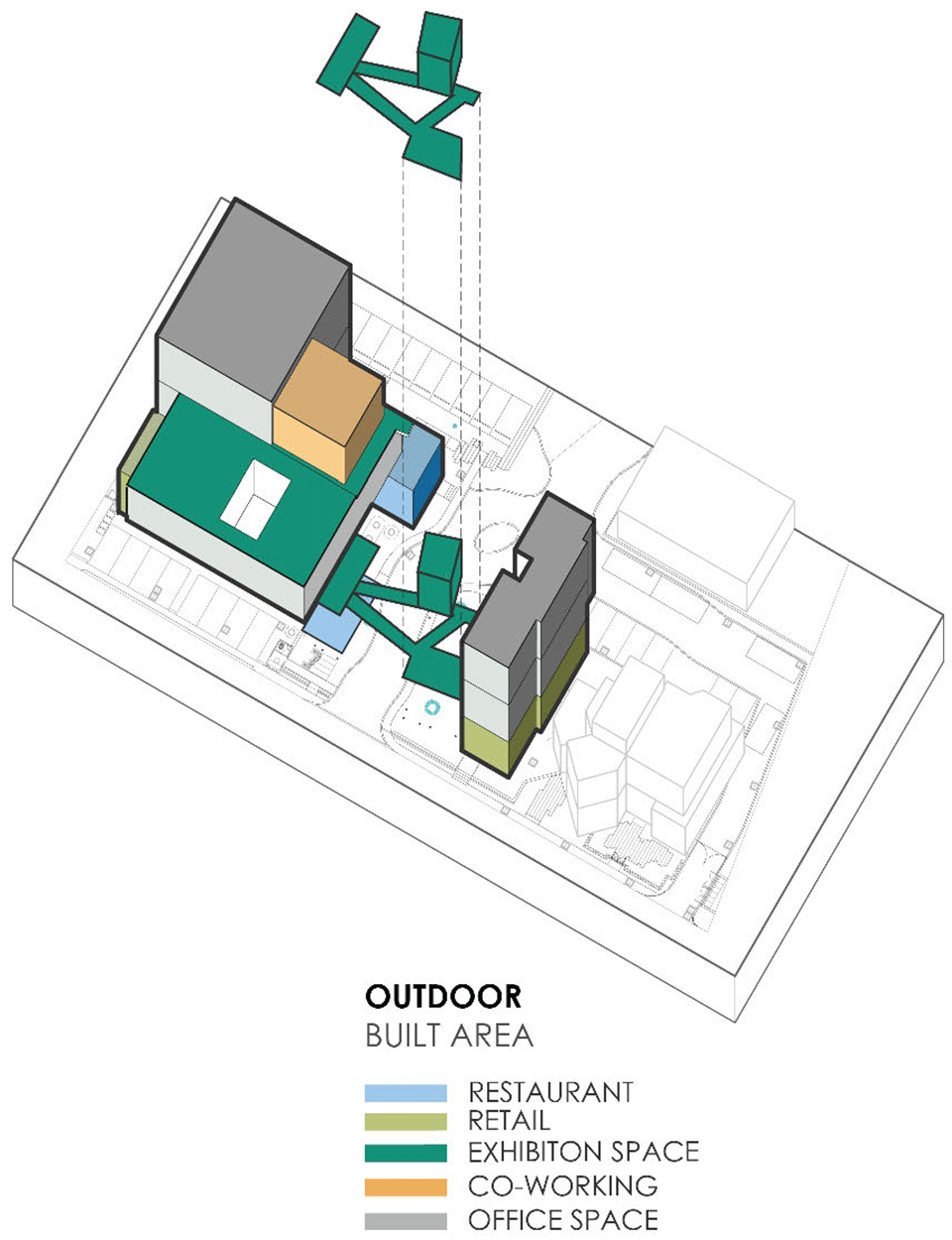
In order to fulfill the 2,000-square-meter office and retail programmatic requirement of the project, the main functions are divided into two to main masses which bounded the site, leaving the main tree courtyard as a free open space. Building A was designed to be an elongated 2-story horizontal building, allowing sunlight to reach the existing Pink Trumpet Tree, preserving its growth while creating an atmospheric courtyard for the building’s occupant. To contrast the horizontal form of Building A, Building B is a vertically orientated 4-story building. The two main masses are then connected together by multi-level sculptural terraces that intertwine itself between the existing trees, leaving all the trees untouched.
▼以镜面玻璃包覆、抬升于地面的“鸟巢” 画廊, the floating “Bird Nest” Gallery cladded in reflective glass seems to dissolve and disappear amongst the trees

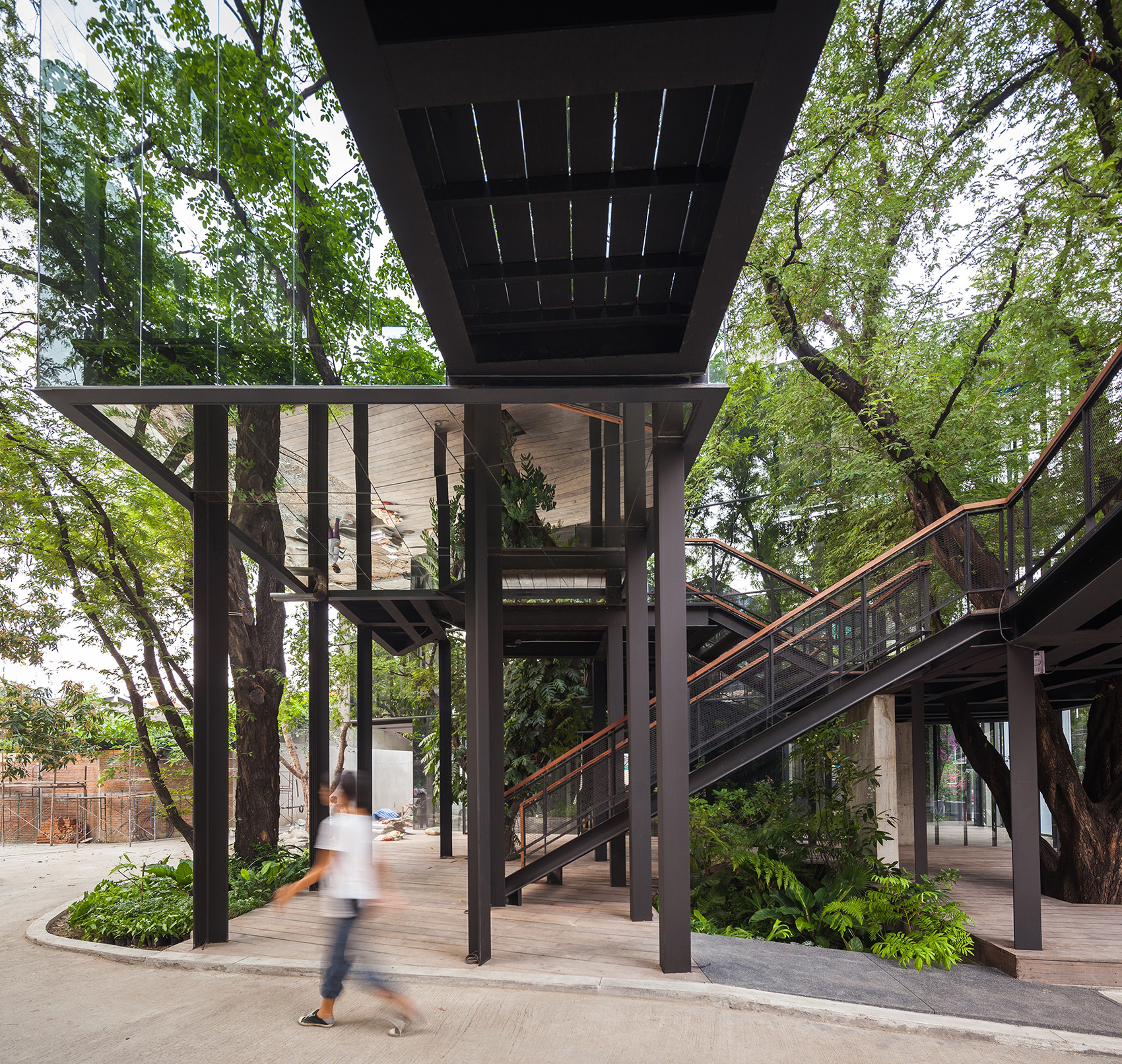

结构上的设计同样考量并尊重了现有的树木。两栋建筑均采用了典型的混凝土结构,以不同保持功能区域在建筑上的完整性。同时,建筑师为树木众多的中央开放空间引入了钢结构,原因是建筑物与绿地相邻,在这里使用灰泥会对既有树木造成破坏,而使用钢结构则能够降低污染的风险。此外,钢结构也能够为树木的生长创造更多灵活的空间。
▼两座体量通过多层级的露台连接起来, the two main masses are then connected together by multi-level sculptural terraces
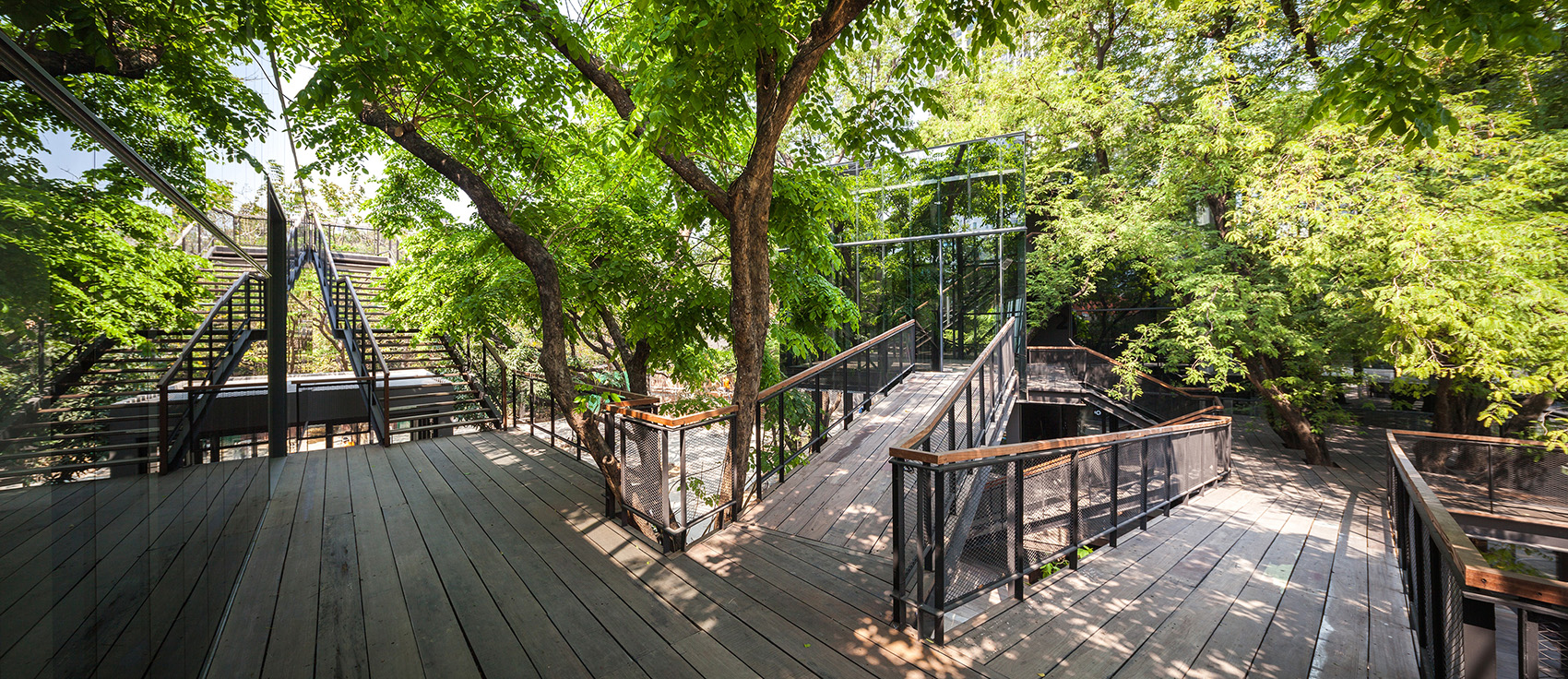

▼繁茂的树木依然保持着原来的位置,all the existing trees remain untouched

The structural design for the project was also executed in respect and consideration to the existing trees. The two main buildings are constructed with typical concrete structure in order to maintain the structural integrity of the function areas. Meanwhile, in the central open space area where the trees mostly congregate, steel structures were introduced. The shift in structural system is due to the building’s close proximity to the greenery, where the use of mortar could damage the existing trees, thus by using steel structure, the risk of contamination is reduced. In addition, steel structure provides more flexibility in navigating the construction around the expanding tree branches.
▼钢结构能够为树木的生长创造更多灵活的空间,steel structure provides more flexibility in navigating the construction around the expanding tree branches
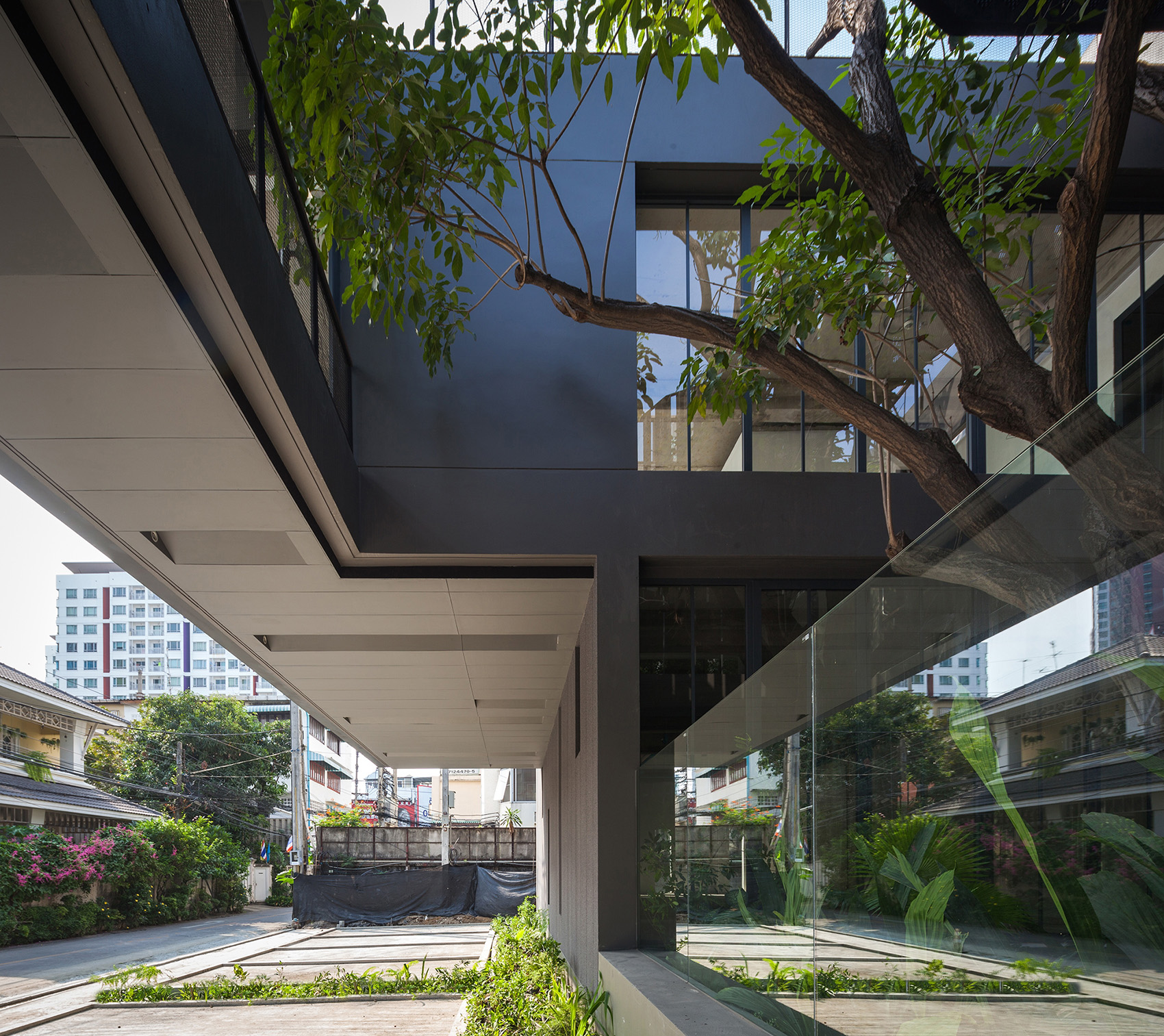
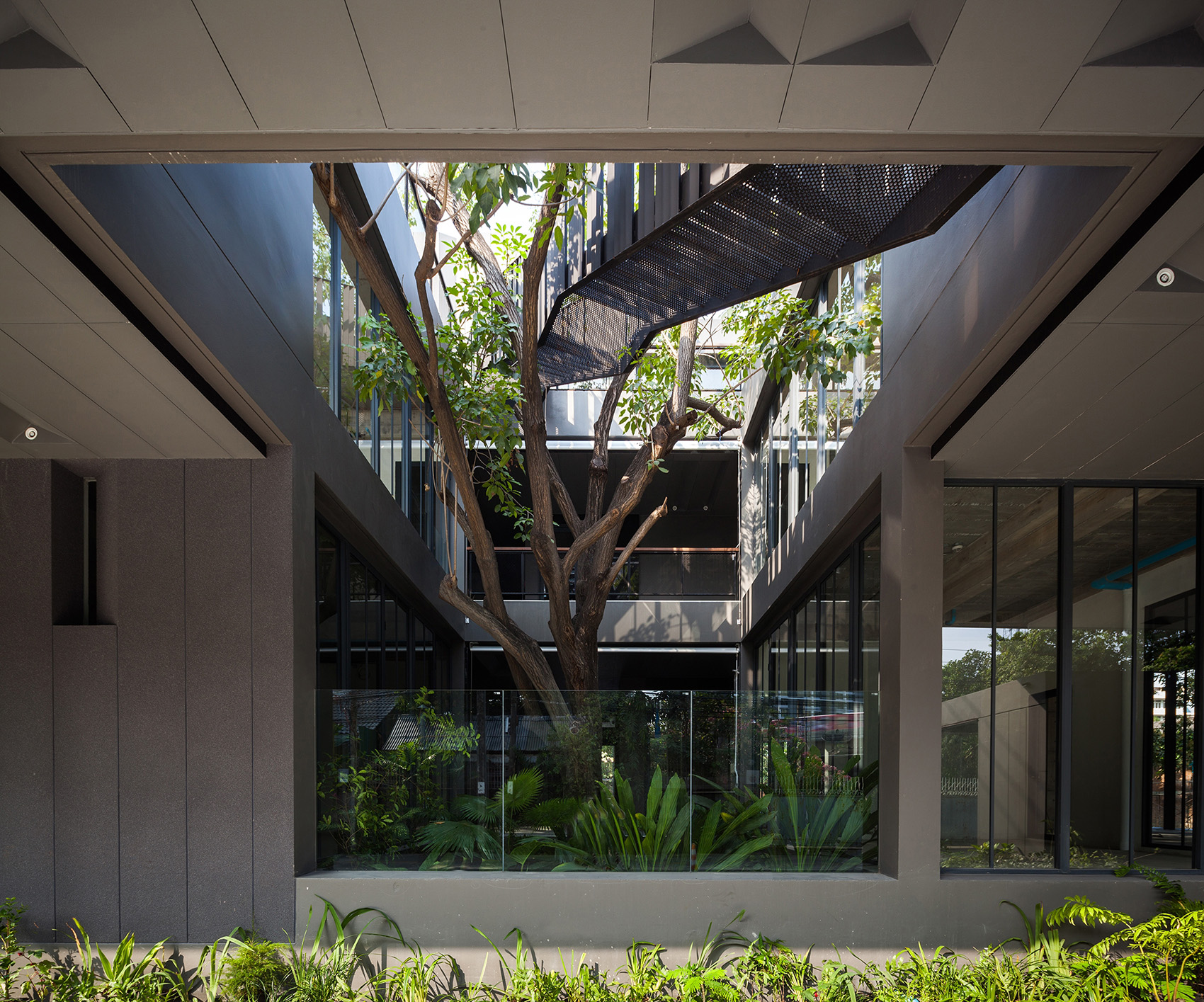
▼钢结构走廊,elevated passage
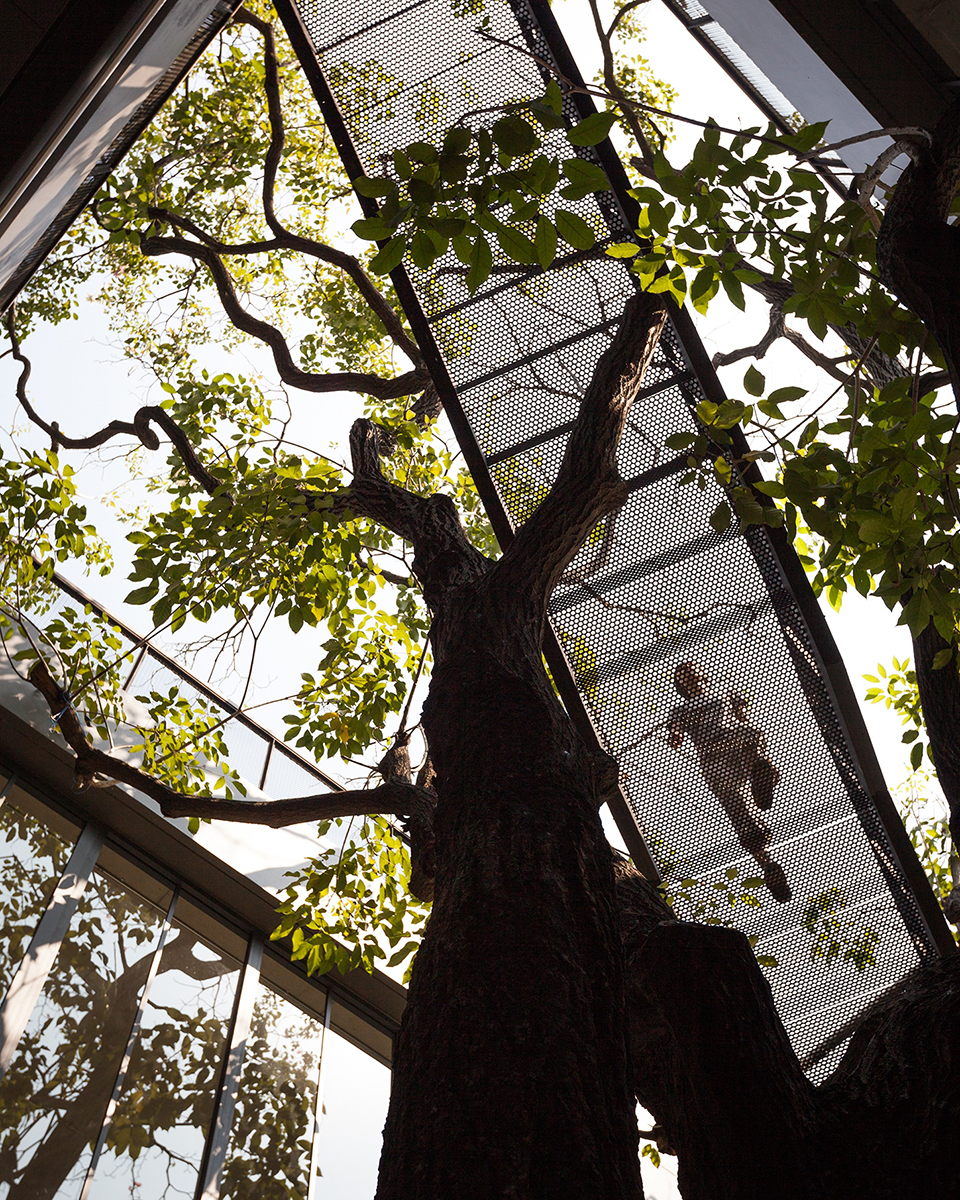
建筑通过镜面、半透明和透明三种不同类型的玻璃以及富有韵律感的折叠立面与周围的城市环境形成连接,并最终呈现出一种消失于自然的感觉。朝向街道的东南立面是一个半透明的双层立面,能够过滤并减少流入建筑内部的光热。半透明的立面朝着入口的方向逐渐由光滑转变为折叠的效果,其图案模仿了阳光透过树冠后投下的光影,指示出内部隐藏的树林。在进入内部之后,建筑朝向庭院的立面和包覆着镜面玻璃的、悬浮于空中的“鸟巢”画廊宛如消隐在树林之间,从真正意义上唤醒了“森林深处”的感觉。
▼玻璃类型分布示意,types of glazing

Three different types of glazing: reflective, translucent, and transparent, along with the rhythmic folding pattern of the façade, are utilized to link the architecture to the surrounding urban context conditions, as it gradually transforms the architecture and finally vanishes into nature. The east façade, which faces the street, is a translucent double façade, helping to filter and reduce heat flowing into the building. Furthermore, as the translucent façade moves towards the entrance, its smooth surface begins to fold, alluding to the forest within, as the pattern mimics the dancing shadows casted by sunlight as it filters through the tree canopies. Once inside, the inner architectural façade and the floating “Bird Nest” Gallery cladded in reflective glass seems to dissolve and disappear amongst the trees. It is this effect of being completely surrounded by trees that which evokes the feeling of truly being Naiipa.
▼“森林深处”的内部空间体验,a internal experience of ‘Deep in the Forest’
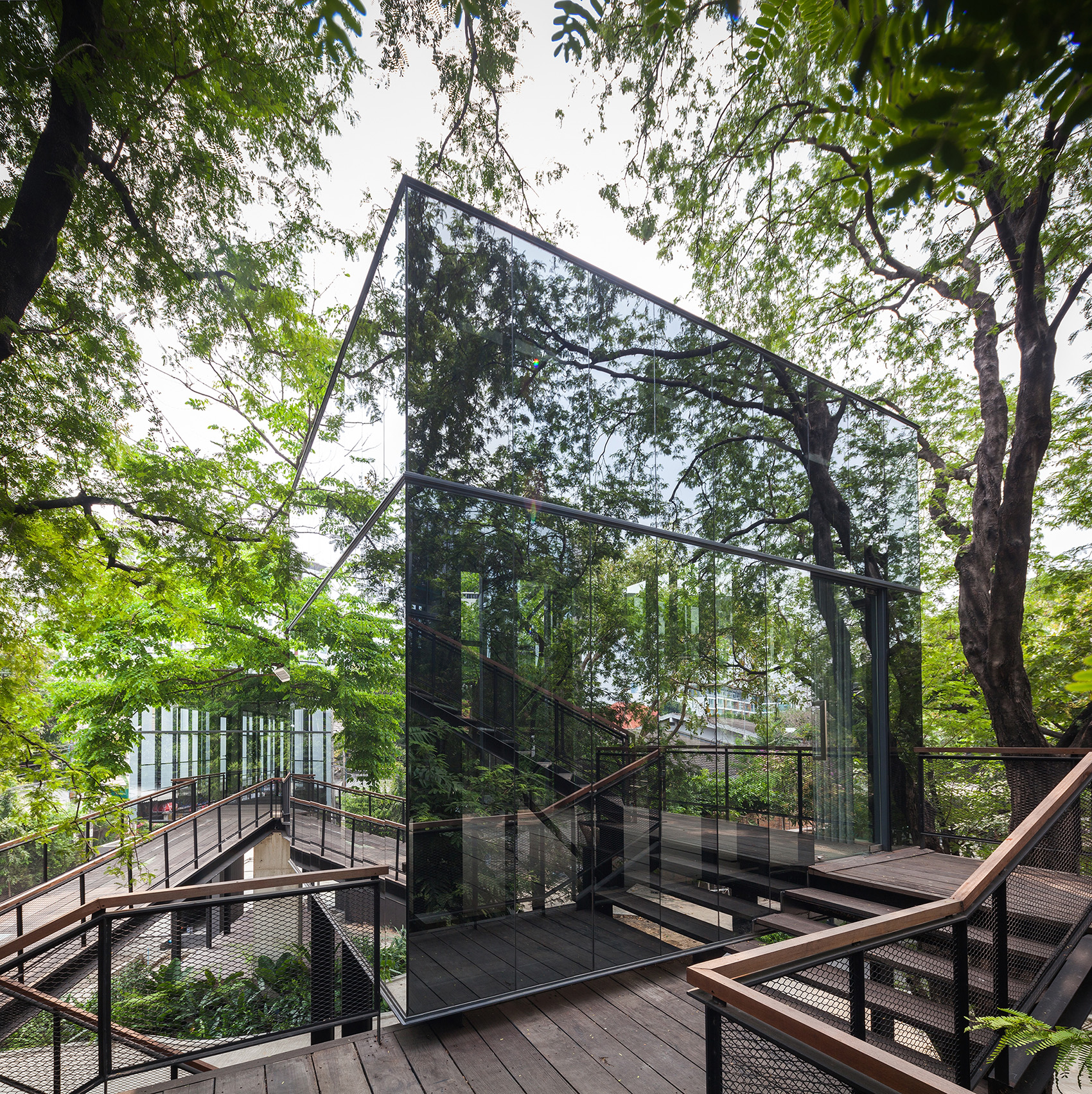
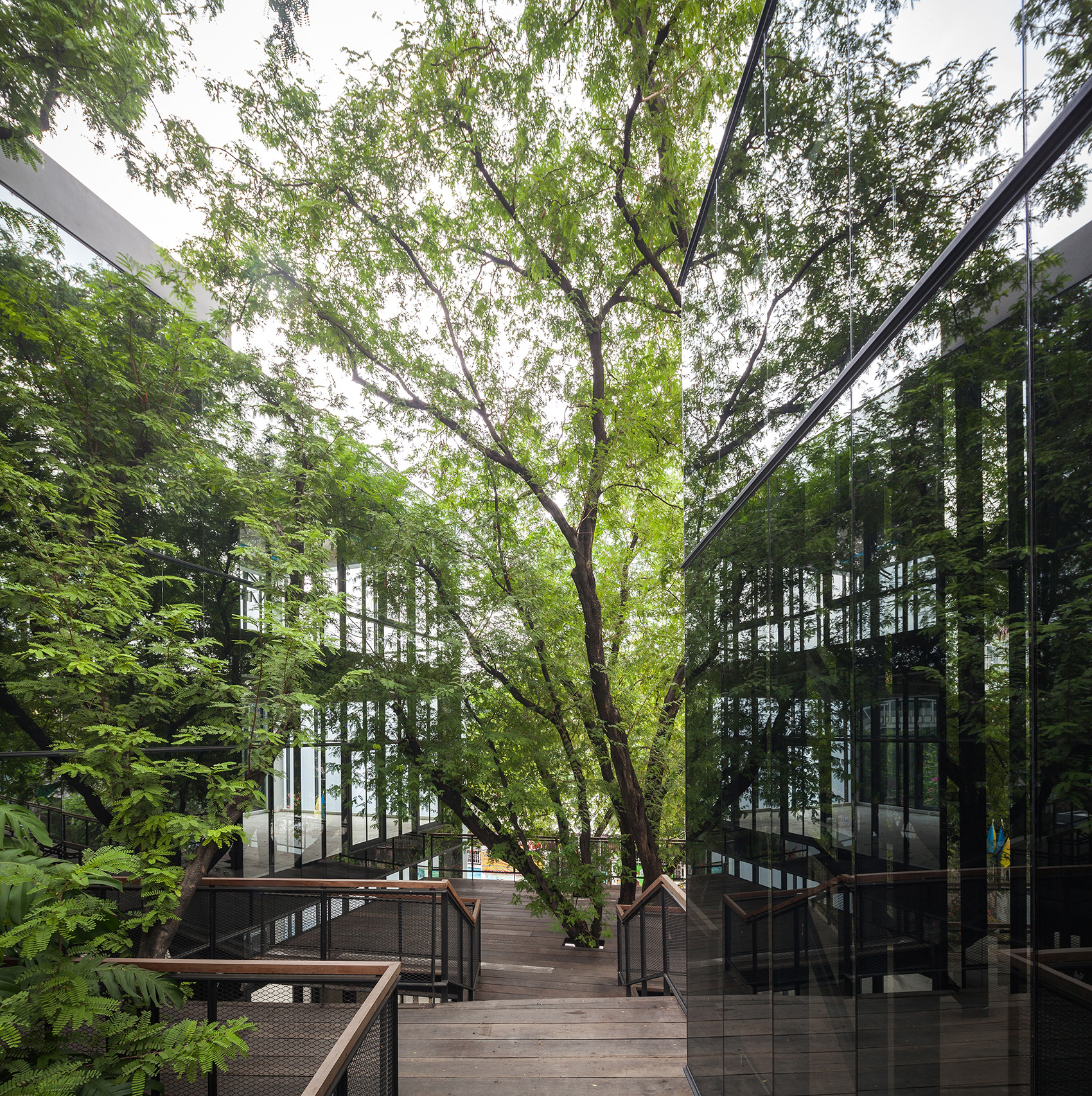
▼镜面、半透明和透明三种不同类型的玻璃使建筑呈现出一种消失于自然的感觉,reflective, translucent and transparent facades are utilized to link the architecture to the surrounding urban context conditions, as it gradually transforms the architecture and finally vanishes into nature
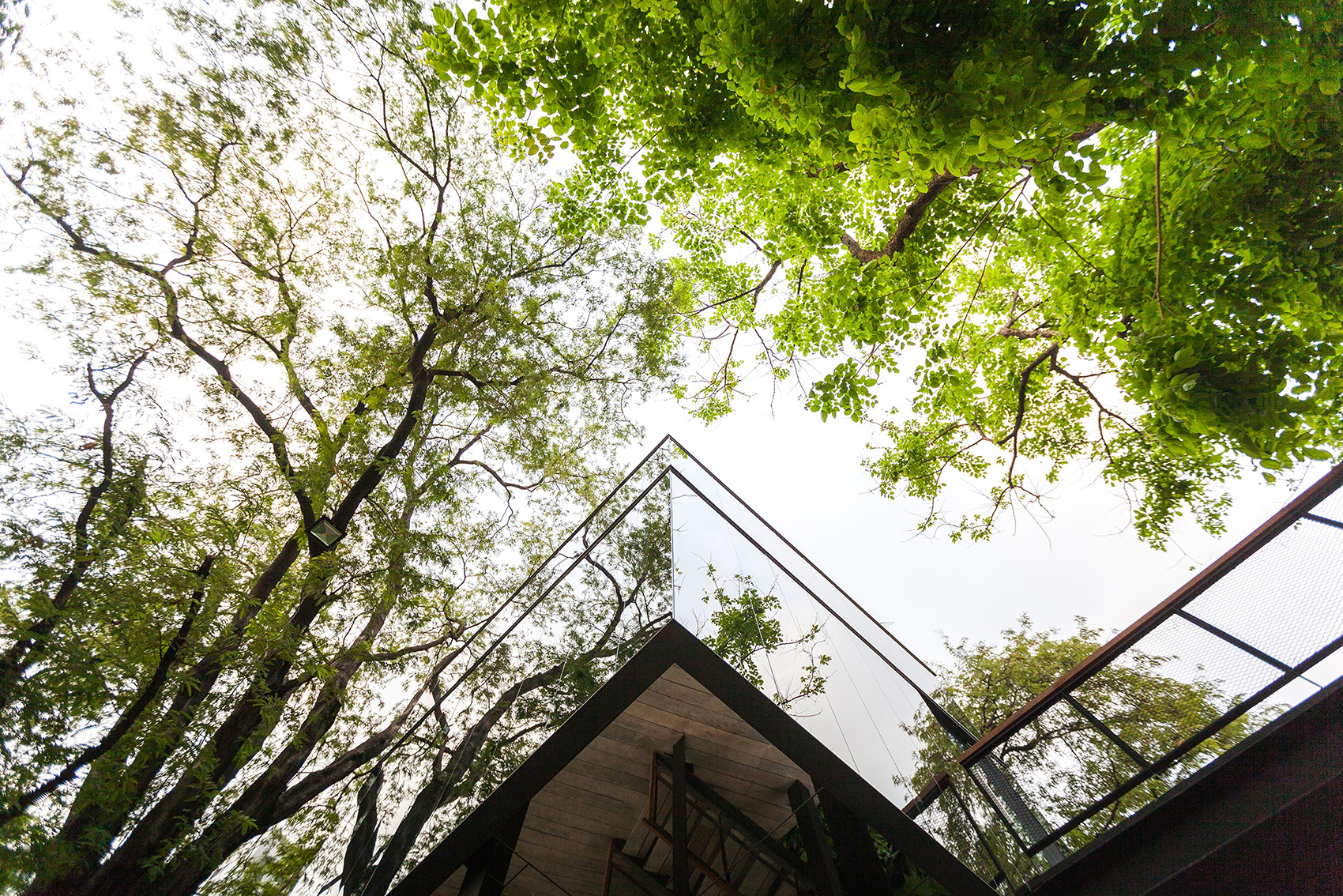
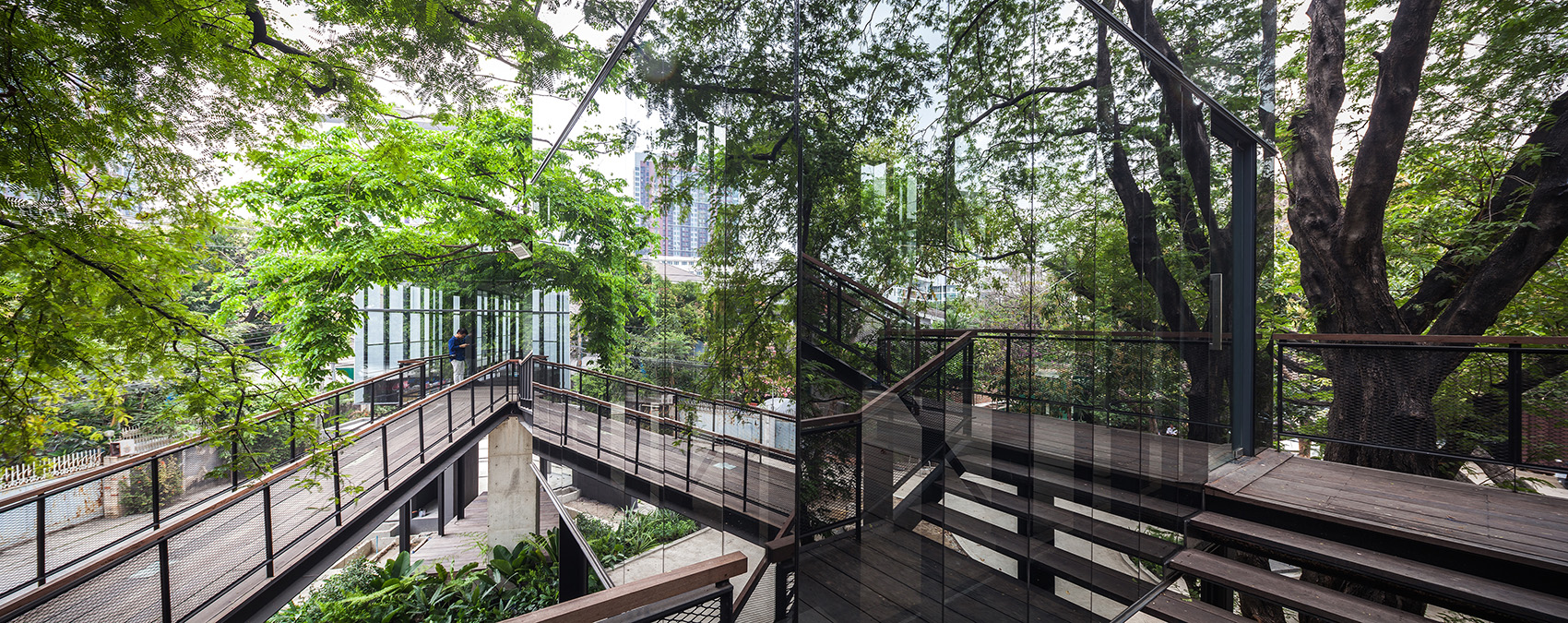

▼室内空间,interior view
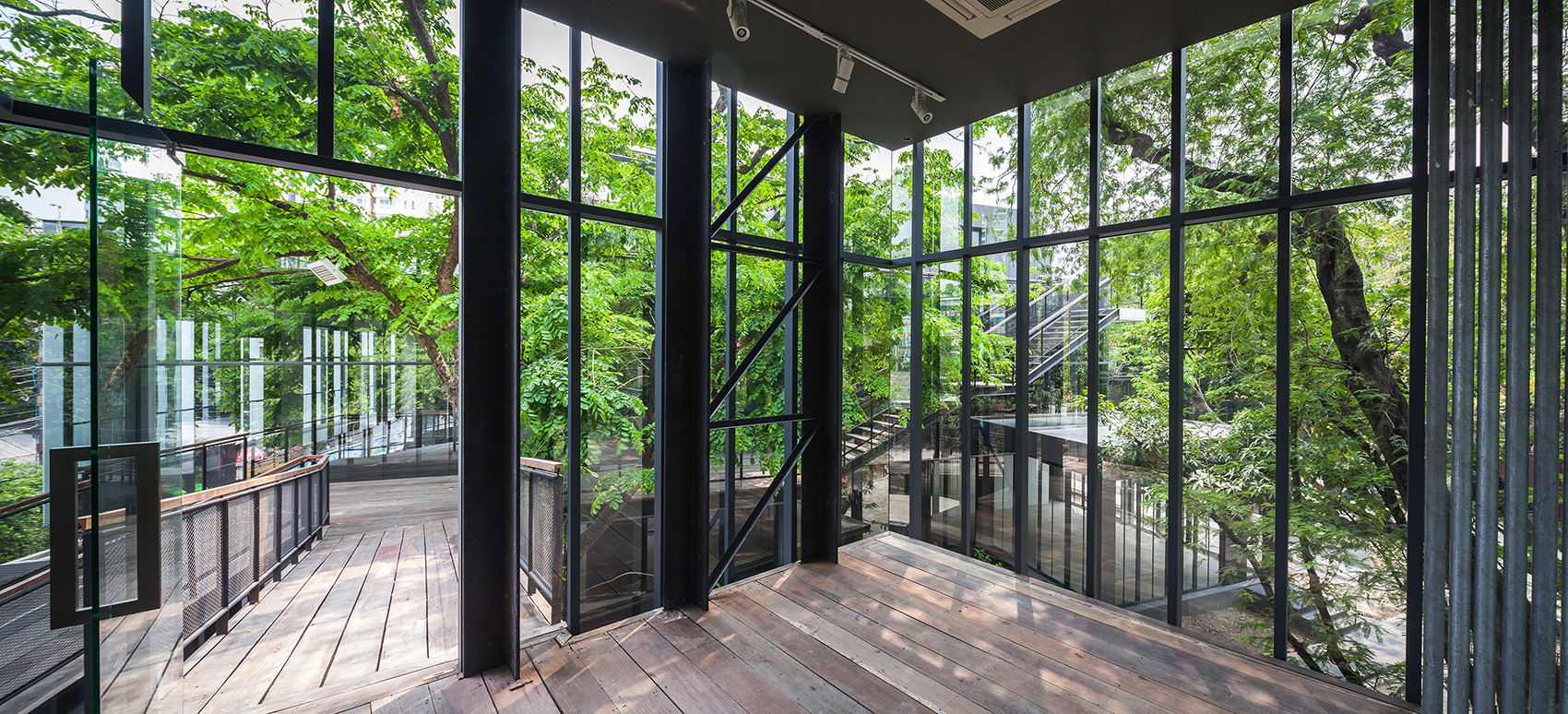

▼舞蹈室,Dance Studio
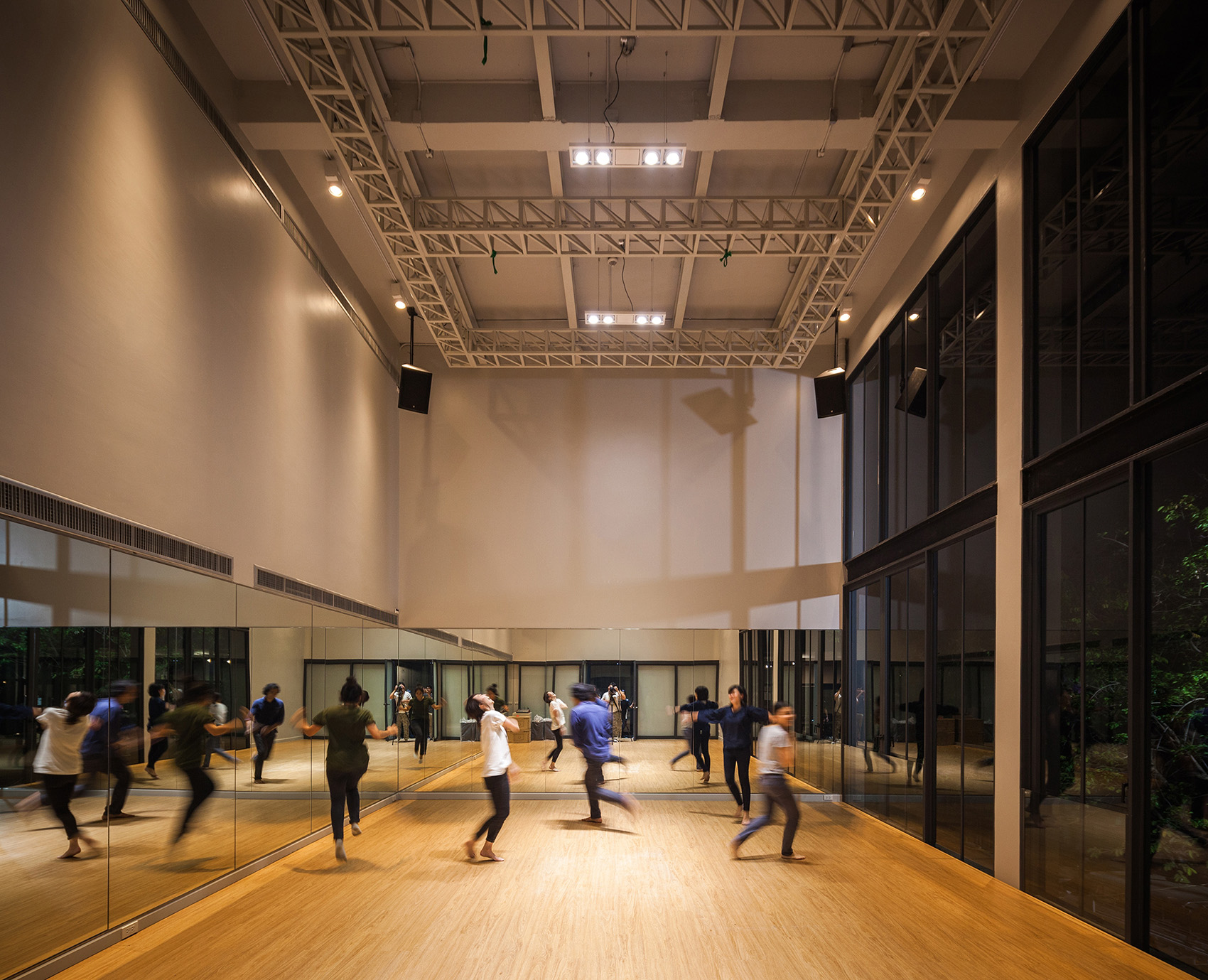
▼折叠的半透明立面,the translucent, folding façade
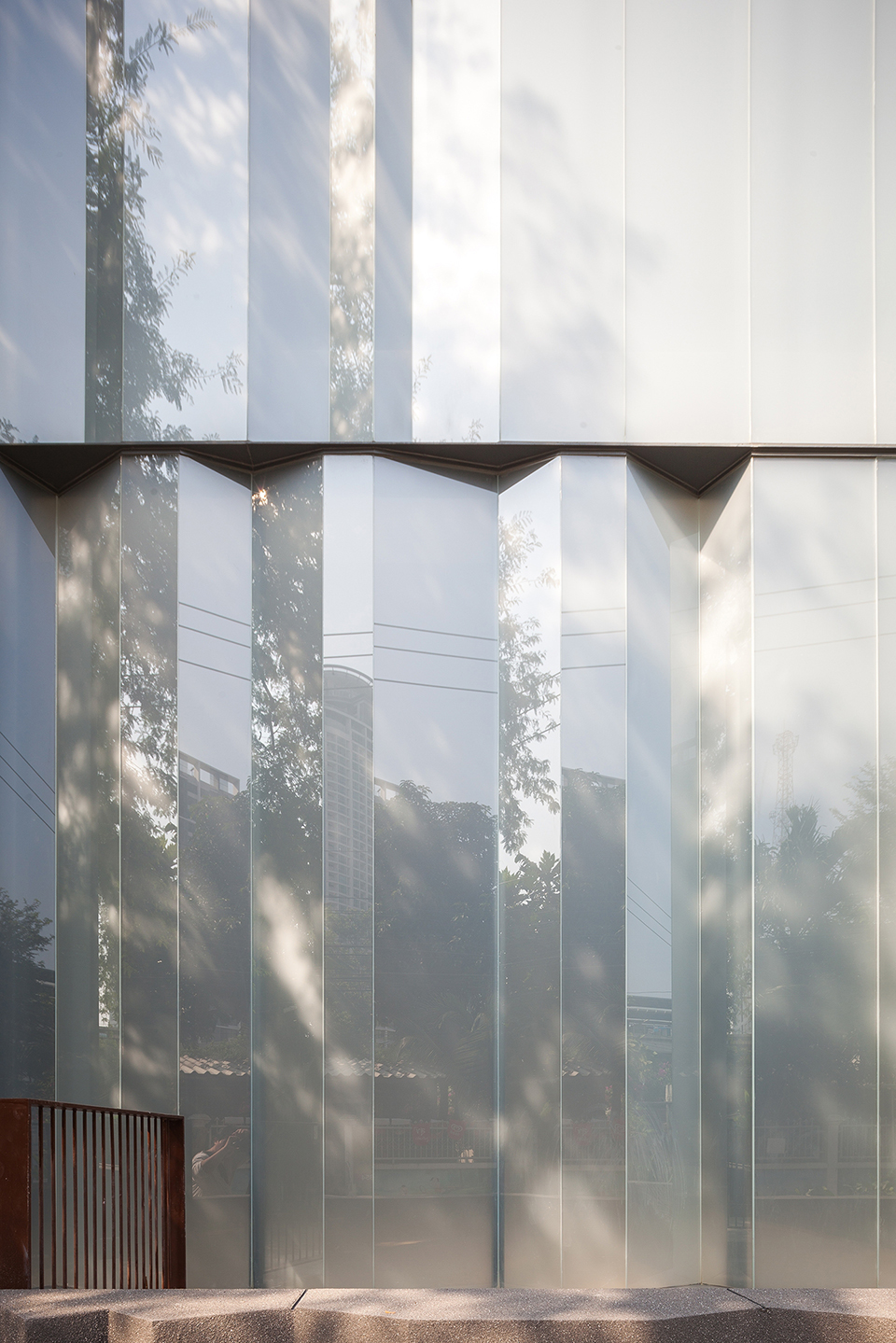
▼城市鸟瞰,urban context
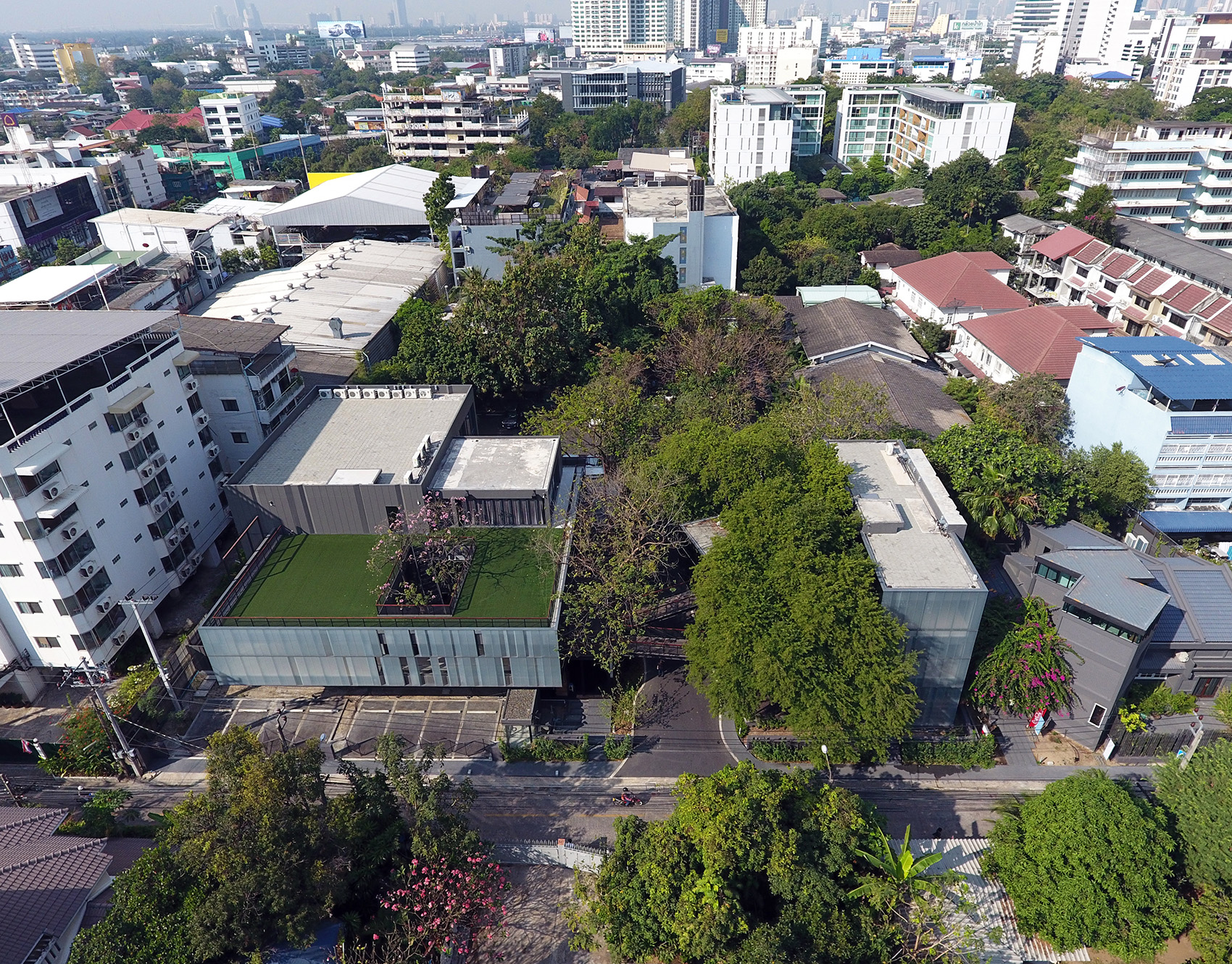

▼体块示意,mass

▼总平面图,master plan

▼首层平面图,ground floor plan
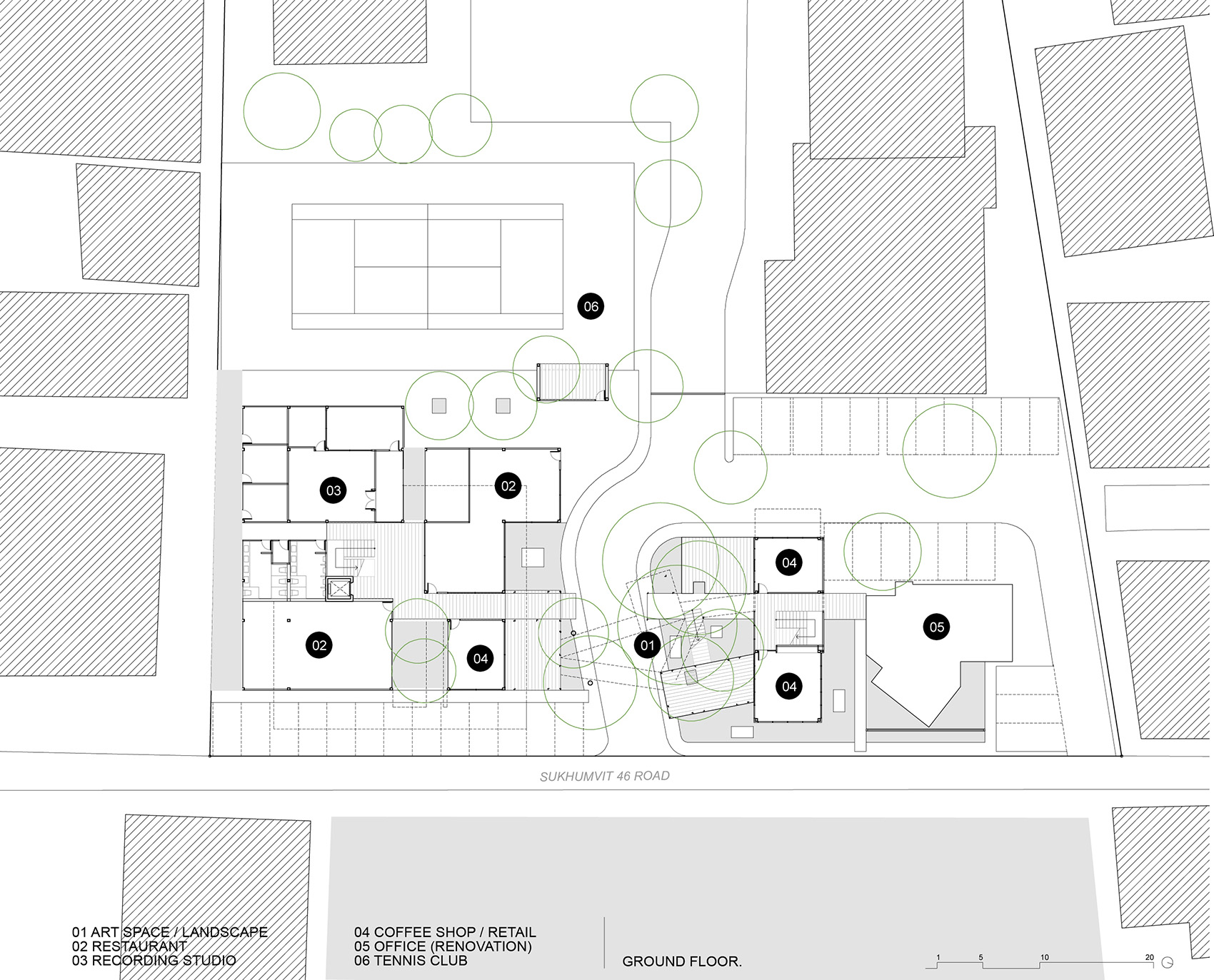
▼三层和四层平面图,second floor and third floor plan
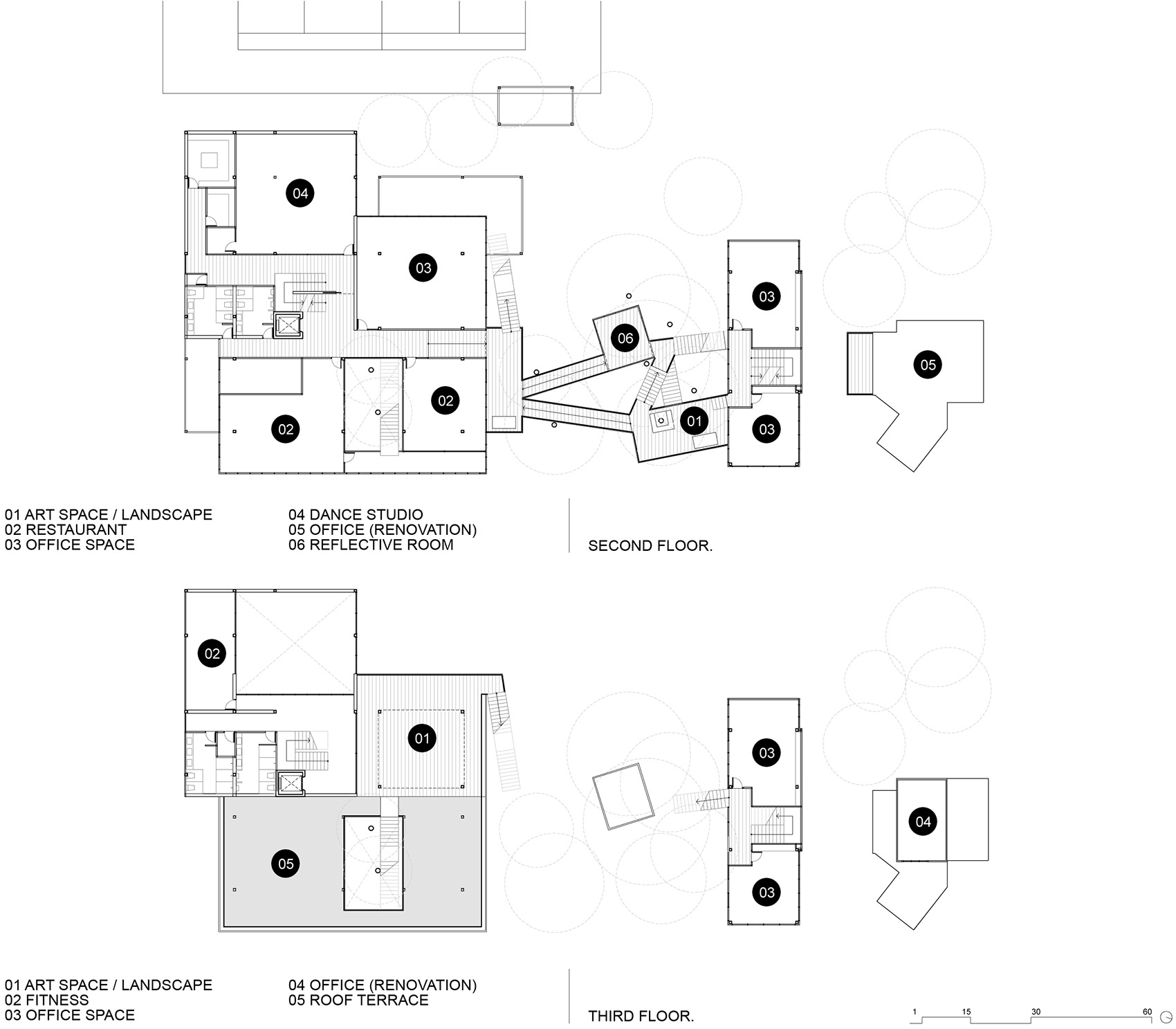
▼立面图,elevations


Location:Bangkok, Thailand Type: Architecture and Interior Design Program: Mixed Use Client:G’RIS 46 Site Area:1,200 sqm. Built Area:2,400 sqm. Design: 2012 Completion:2016 Construction Cost:70M baht Stu/D/O Project Team: Apichart Srirojanapinyo Chanasit Cholasuek Adrian Smiths Chompunuch Vanichayanguranon Pitchaya Kointarangkul Landscape Architect: Field Landscape Studio Lighting Designer: Siriluck Chinsaengchai Identity Designer: KK Rakitawan Structural Engineer: B.N.G. Engineering Mechanical Engineer: MEE Consultants Consultants: Chanin Limapornvanich Contractor: Sittanant Visualizer: Stu/D/O Photography: Stu/D/O, Pirak Anurakyawachon Awards:2015 Emerging Talent (stu/D/O x NAIIPA), Wallpaper’s Designs of the Year 2016 ASA Citation Award
